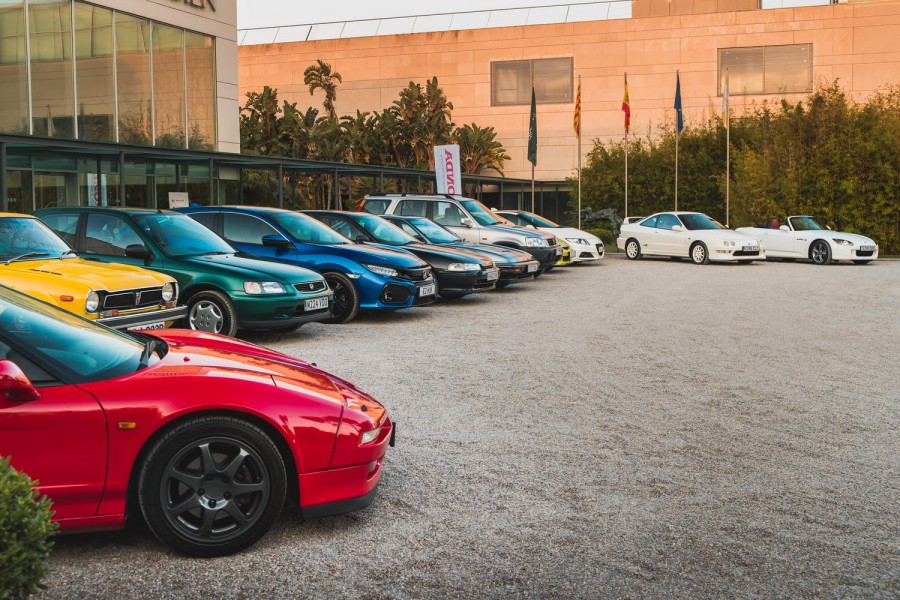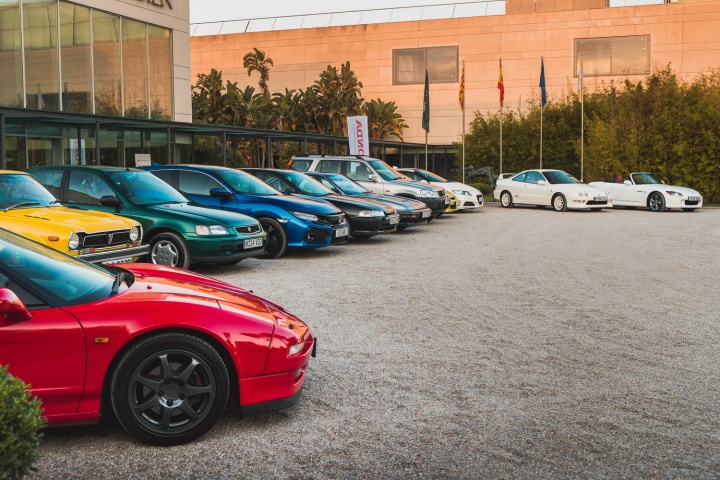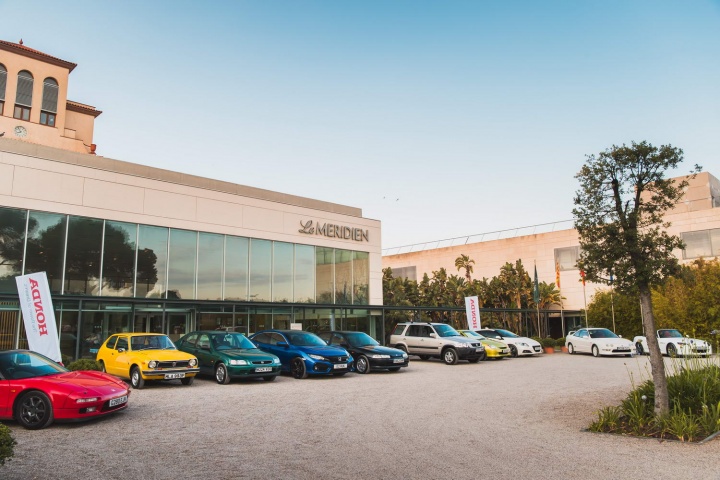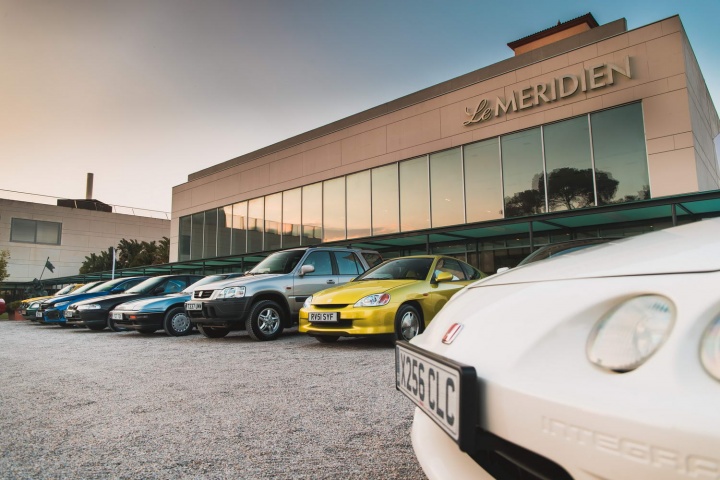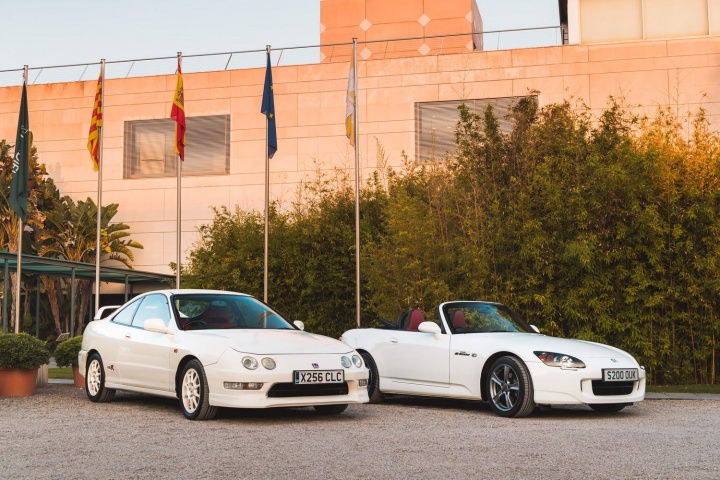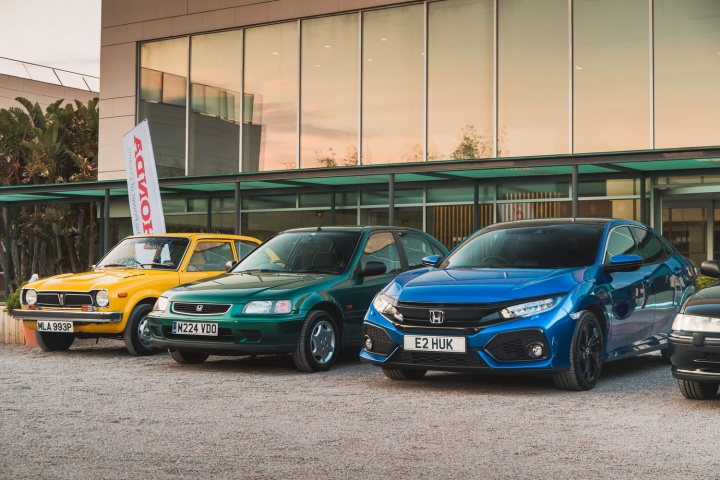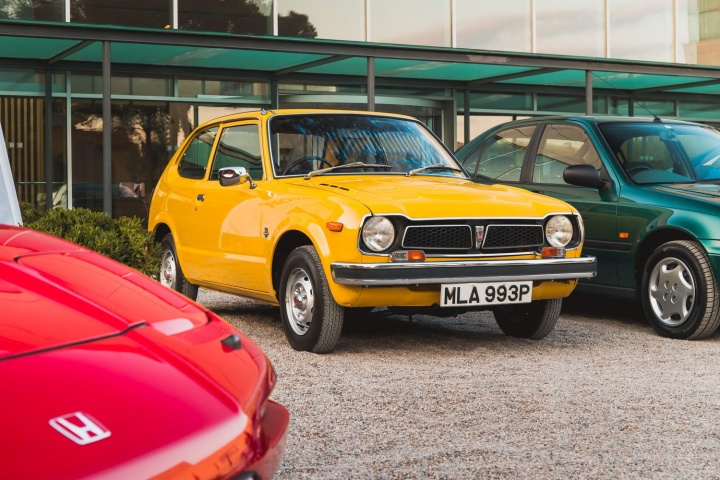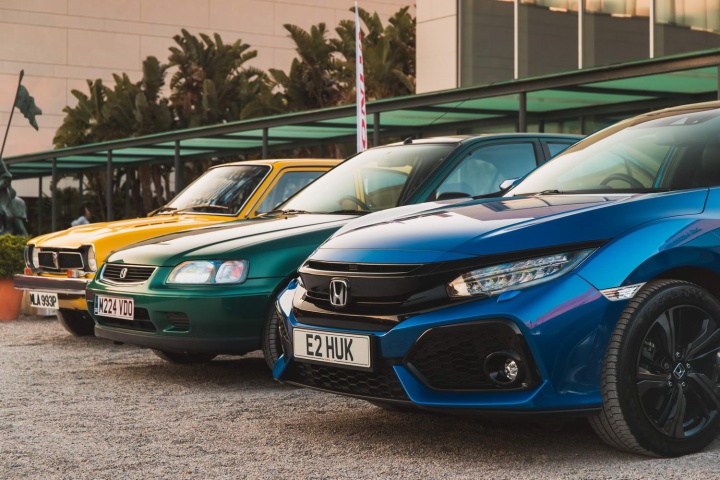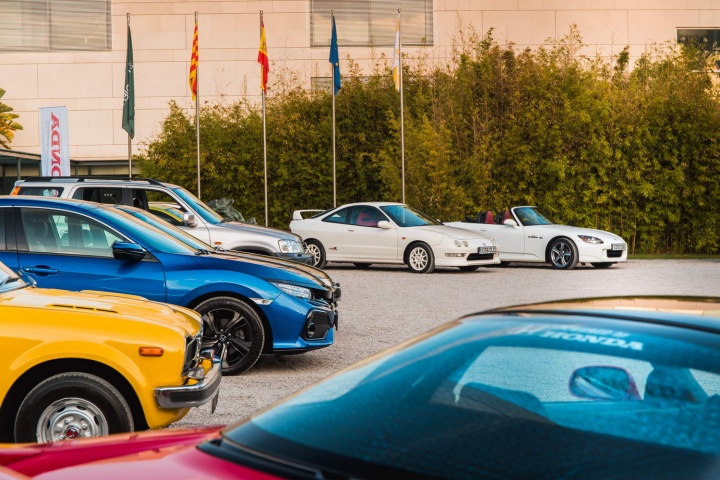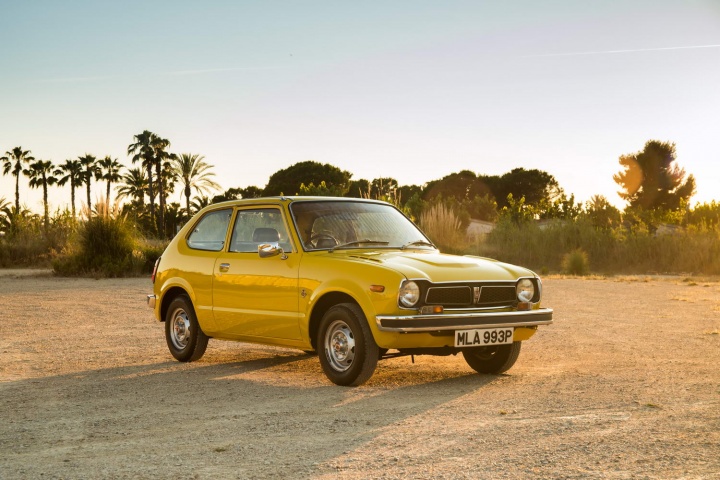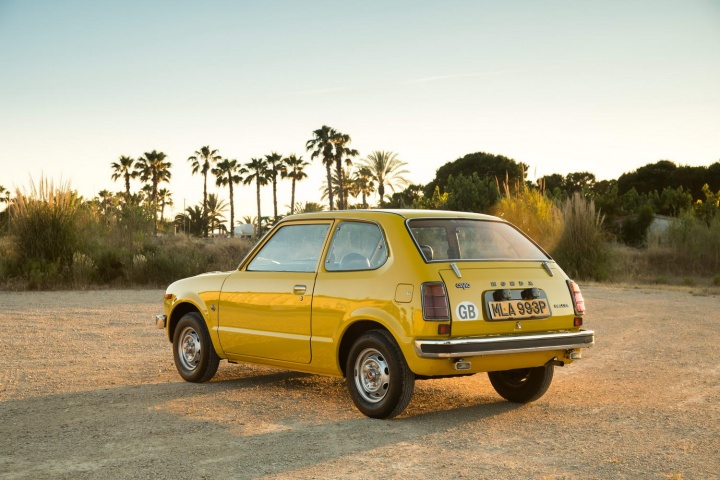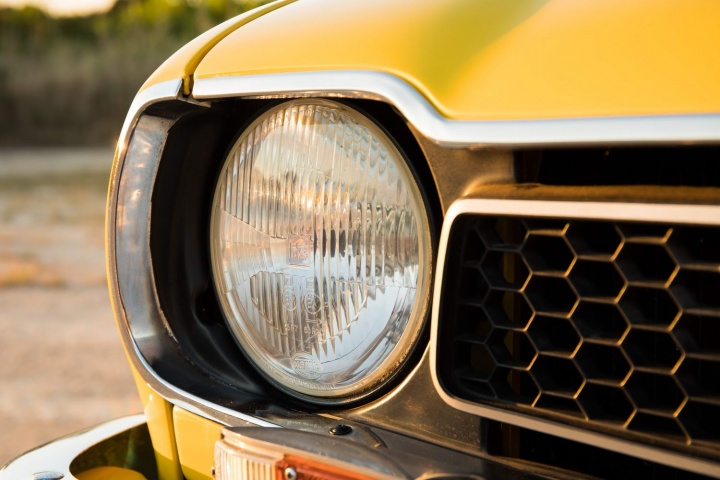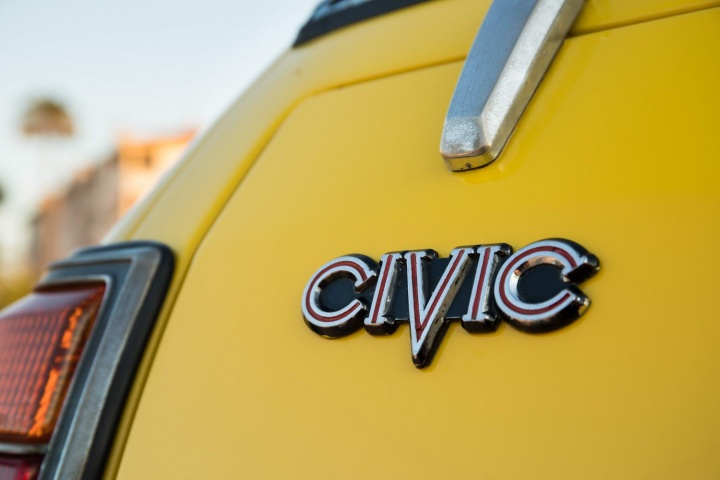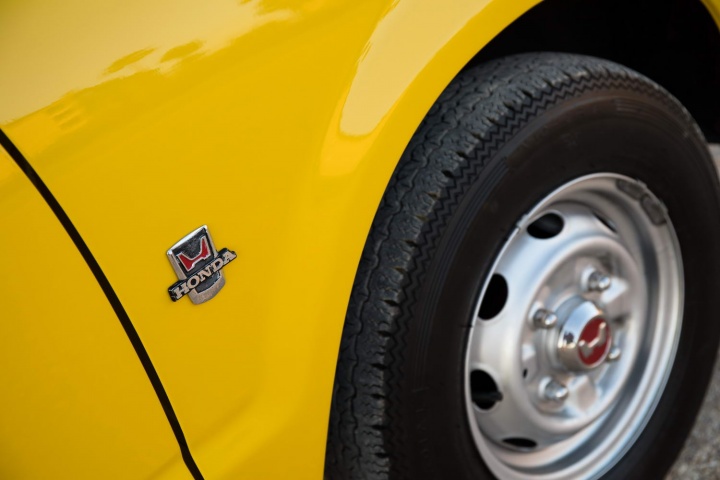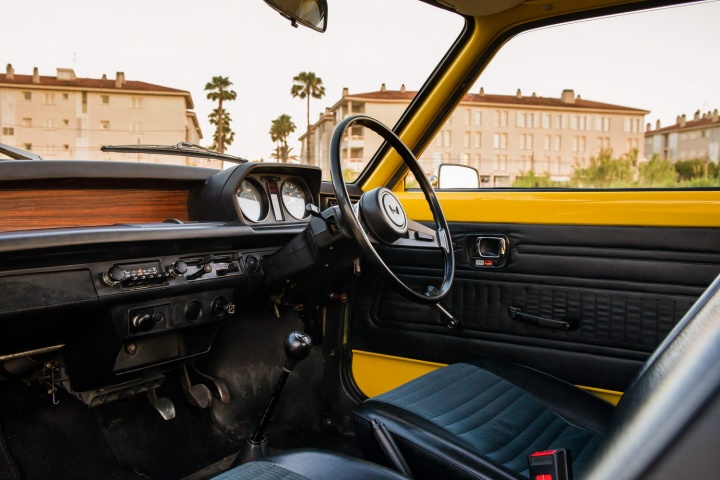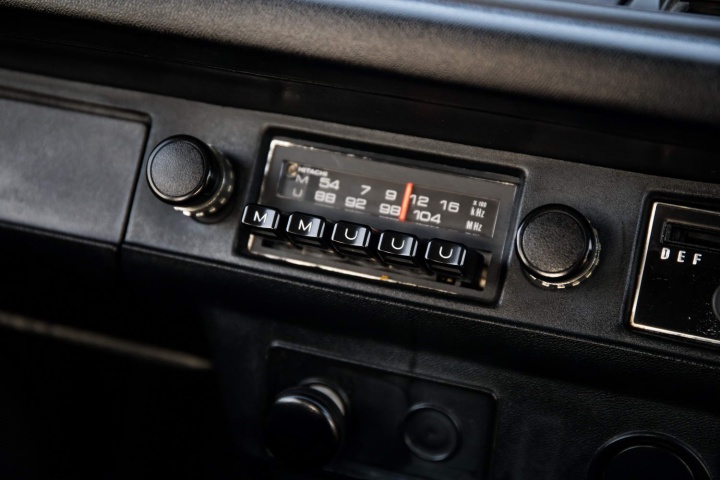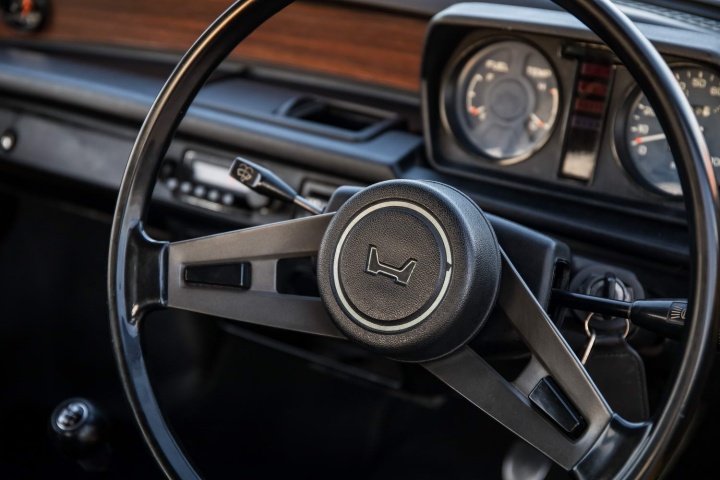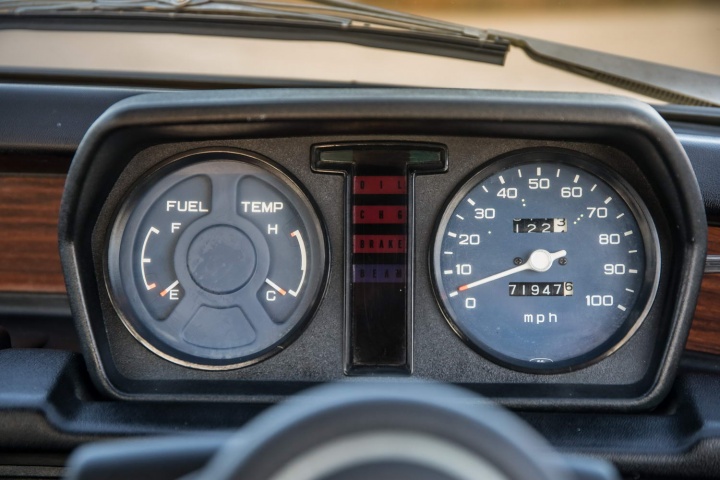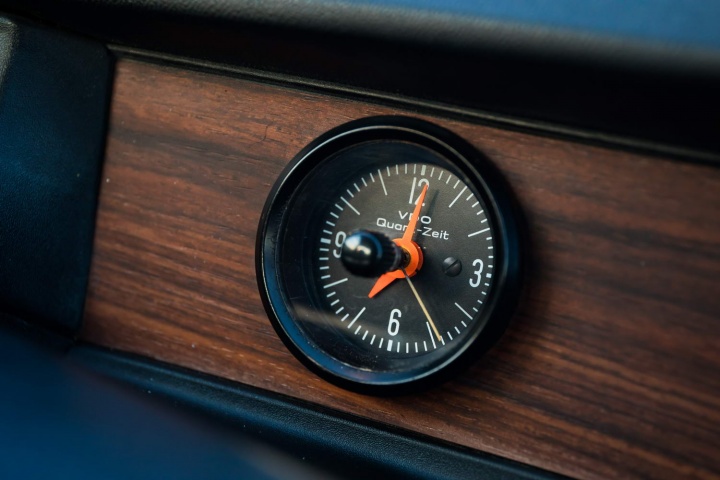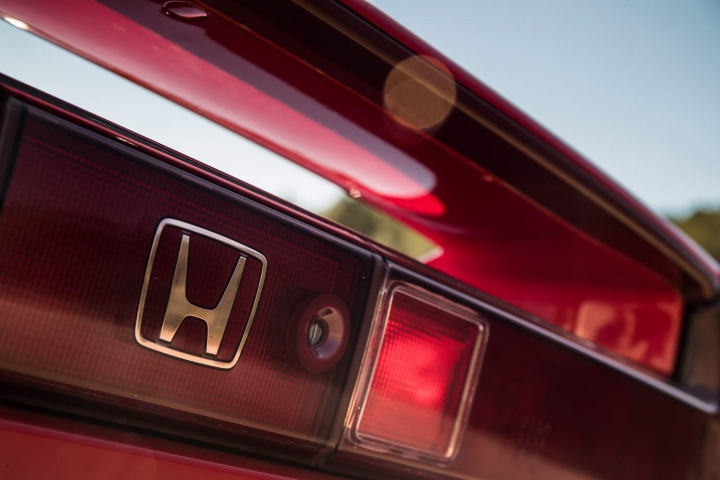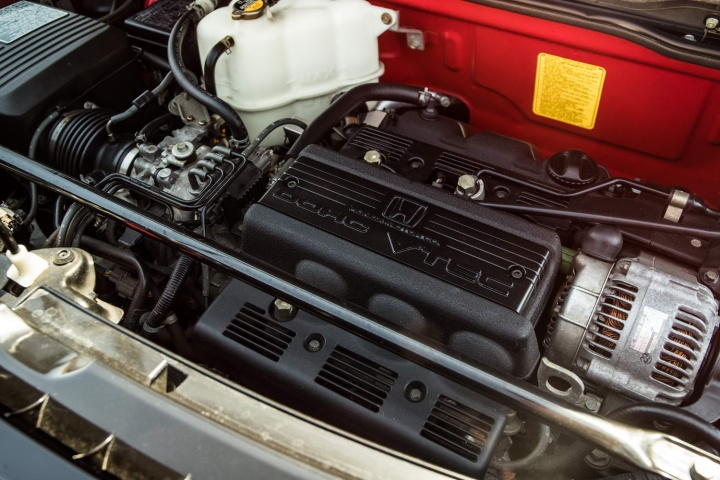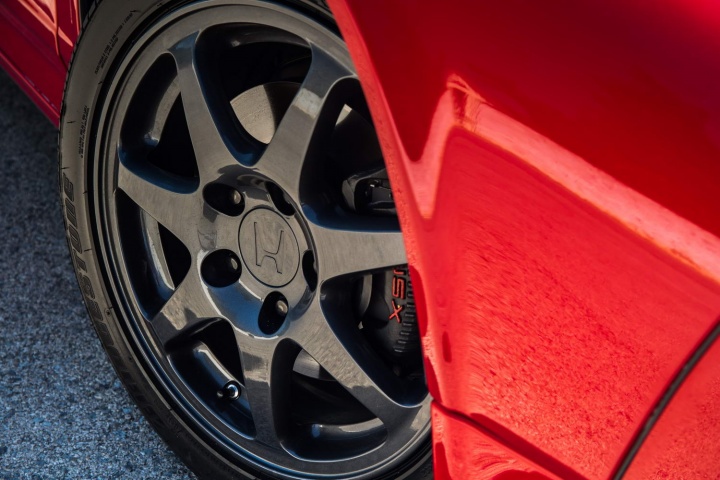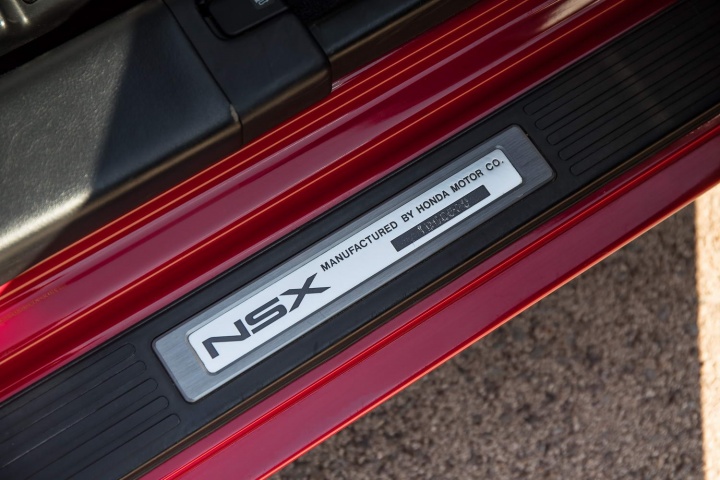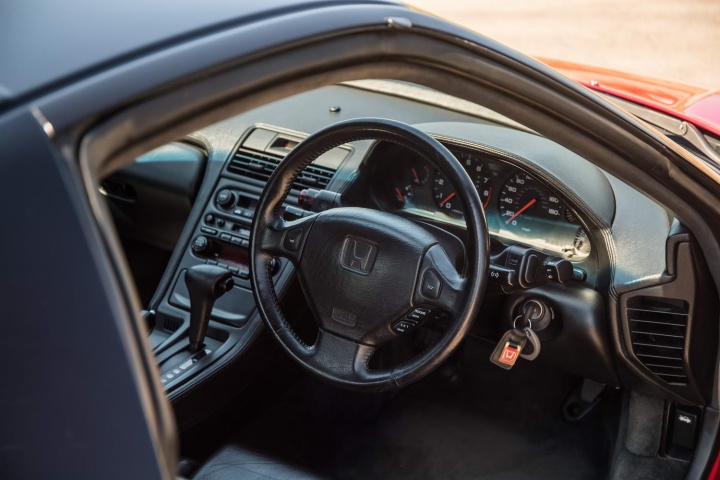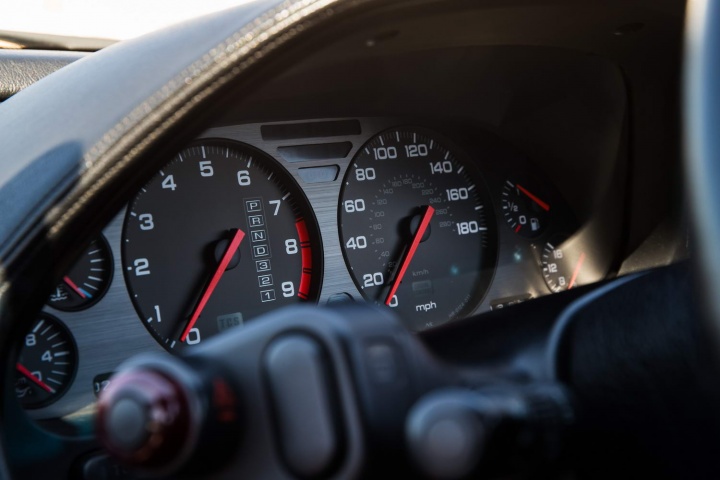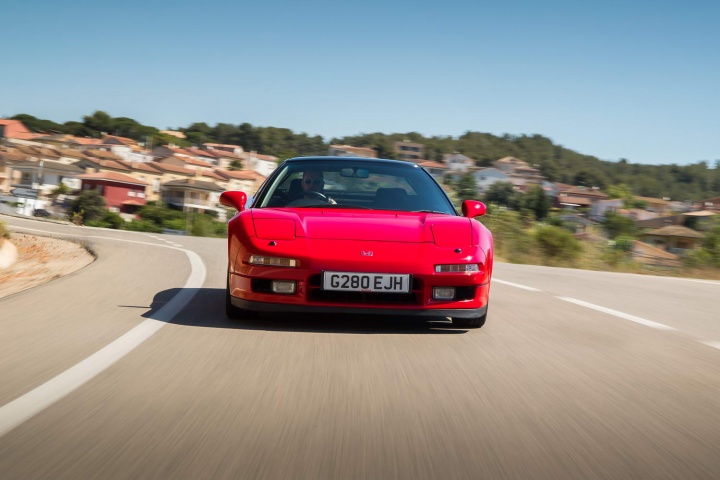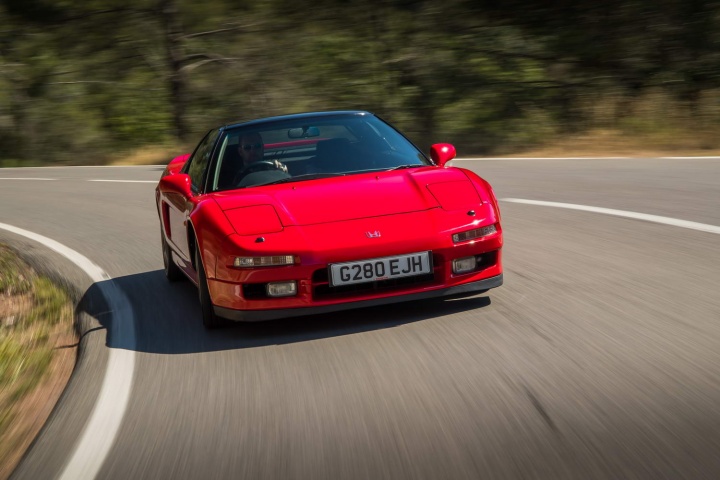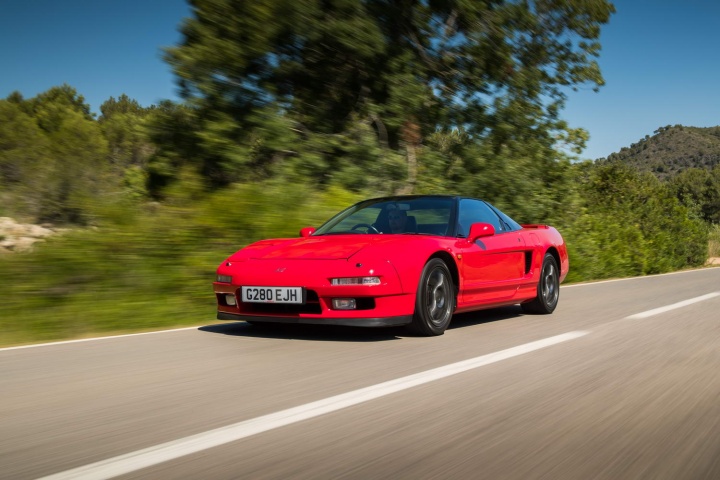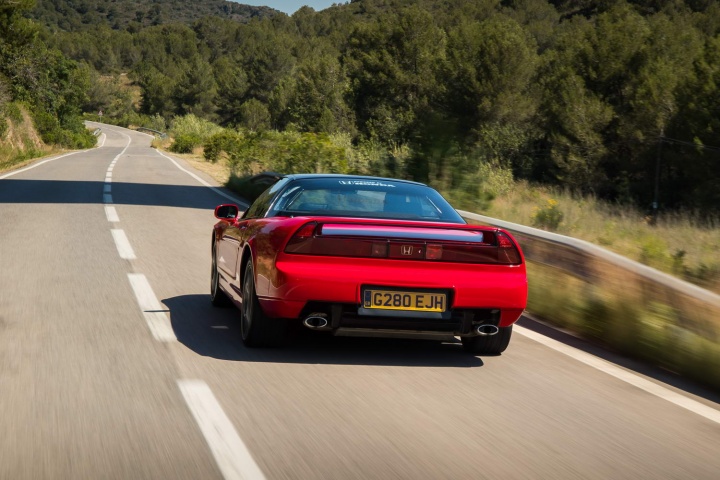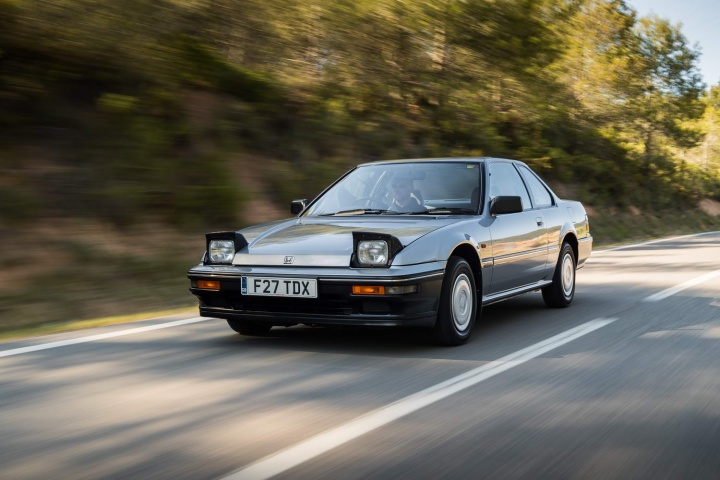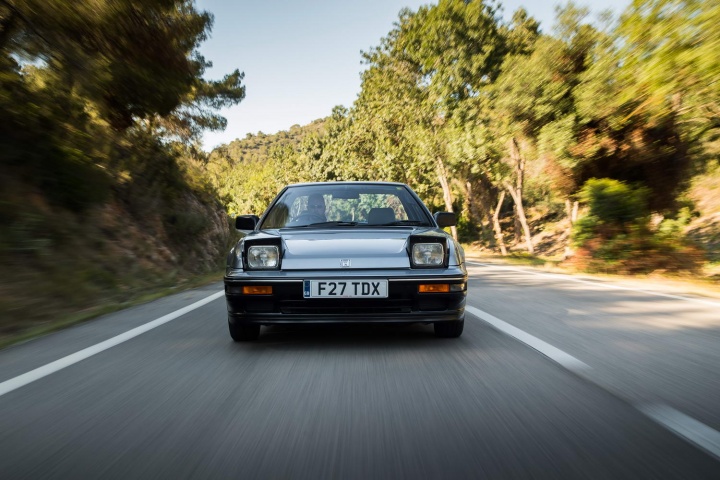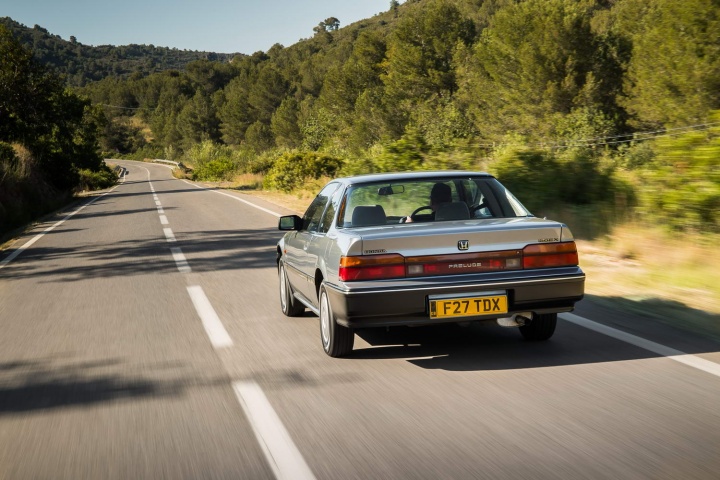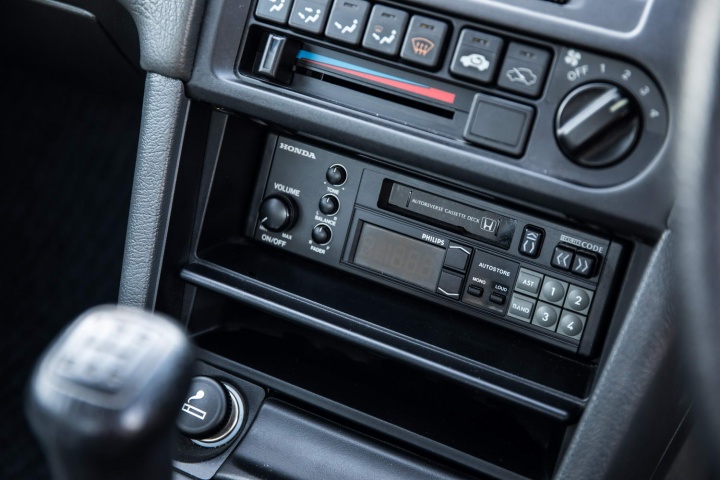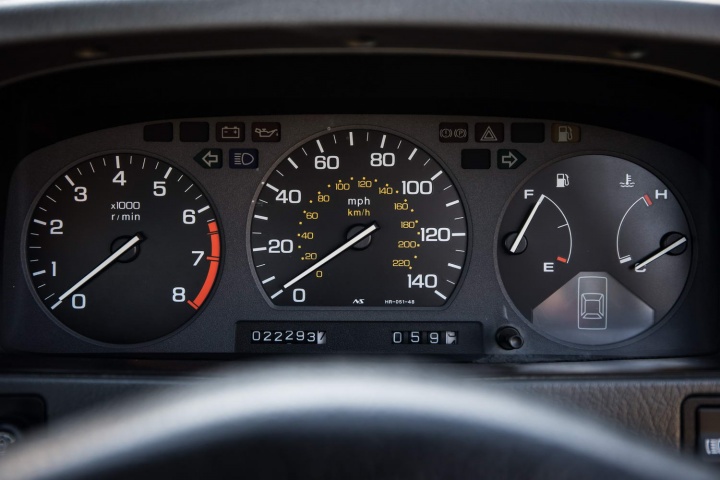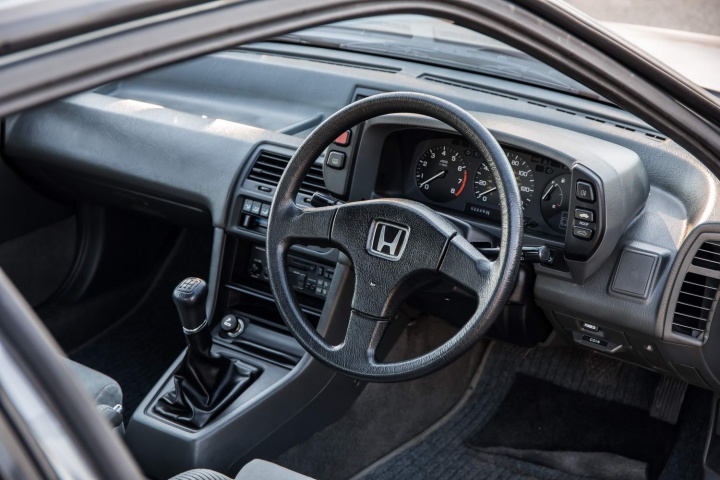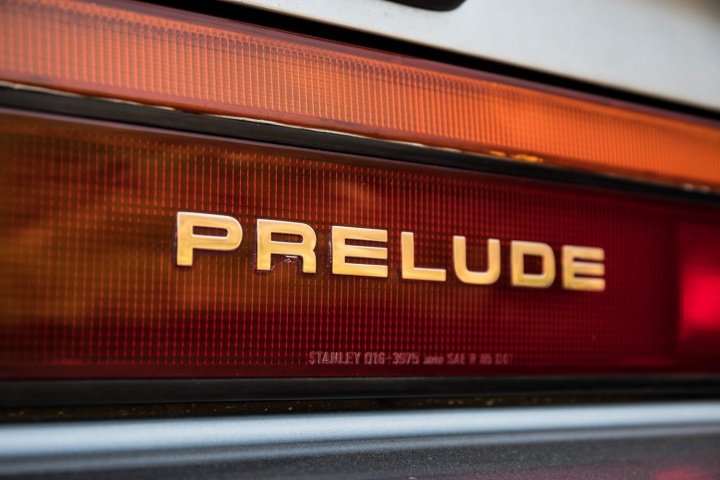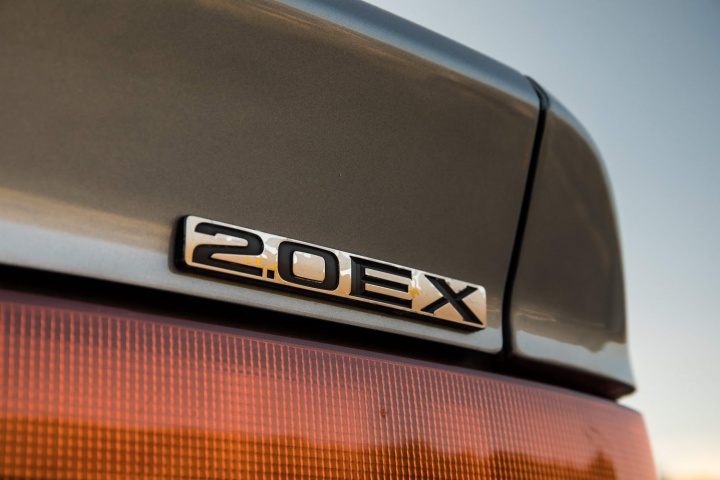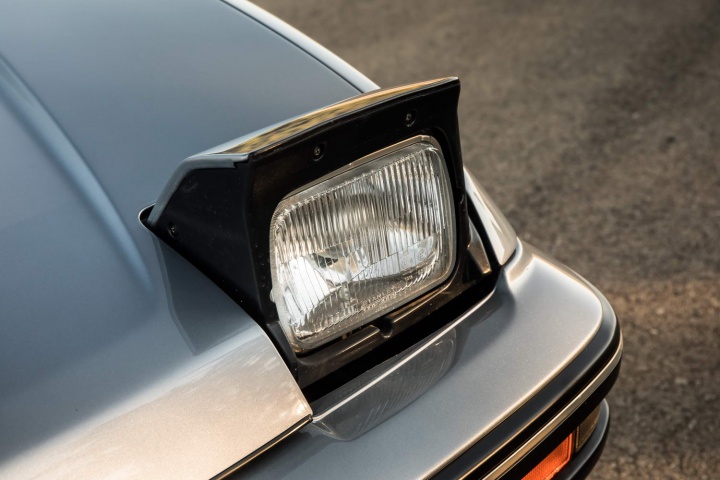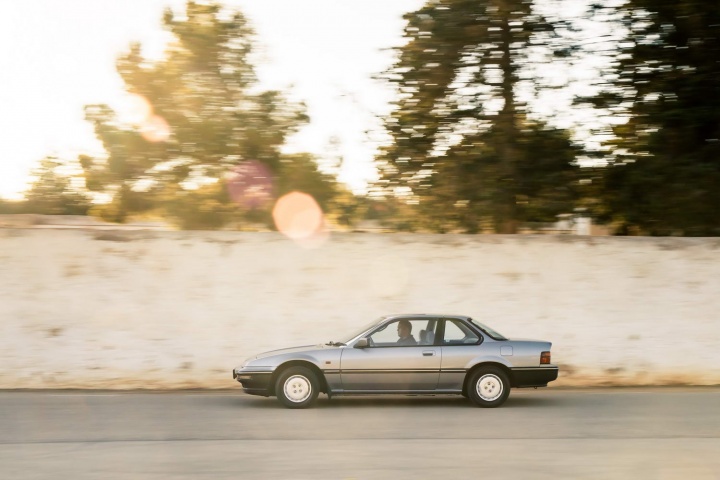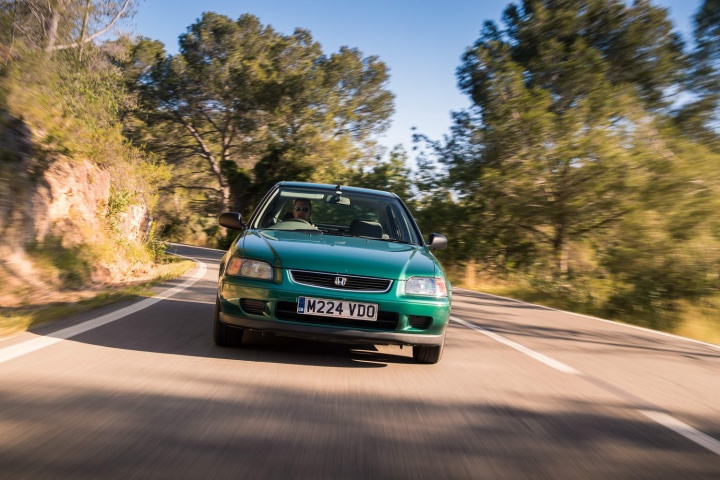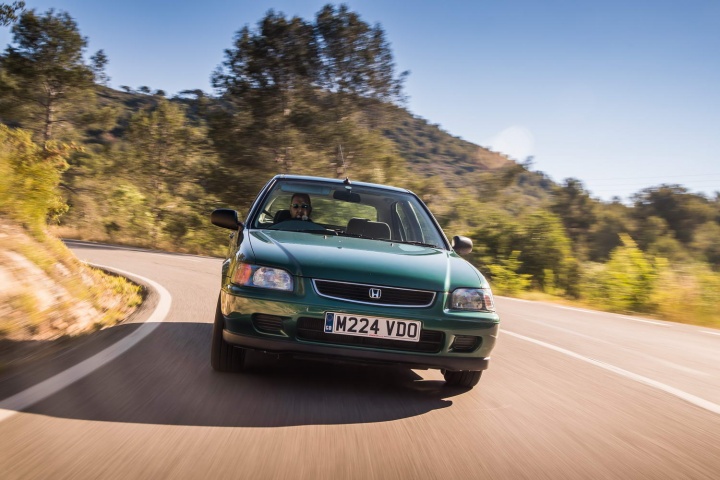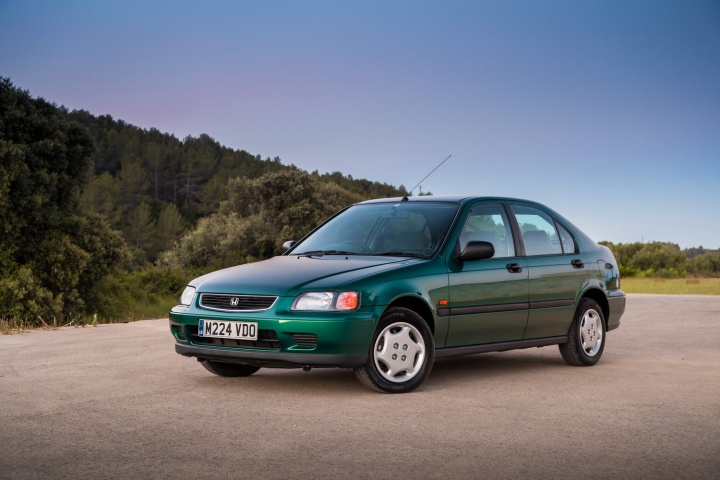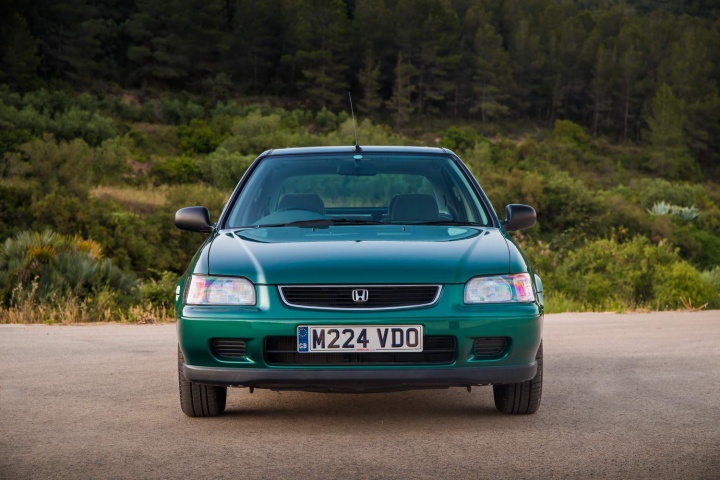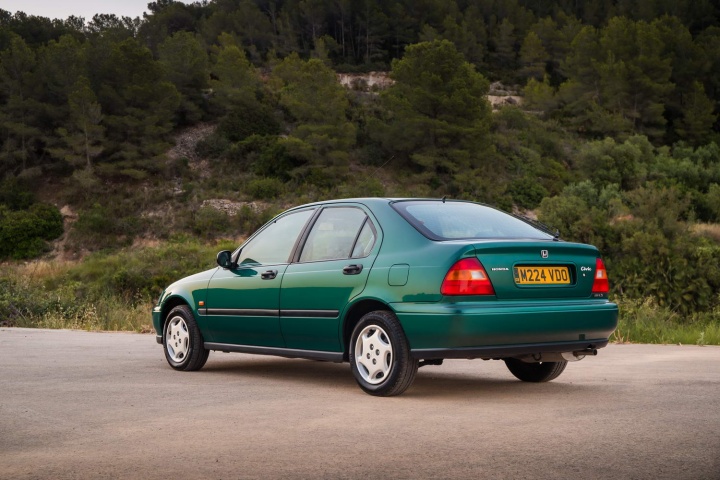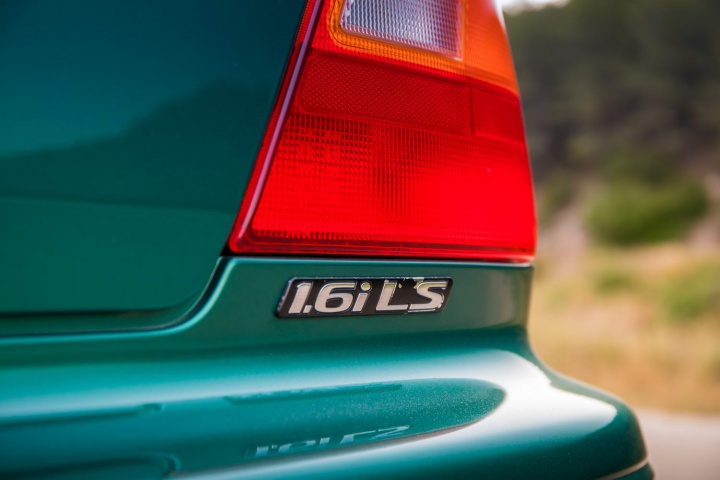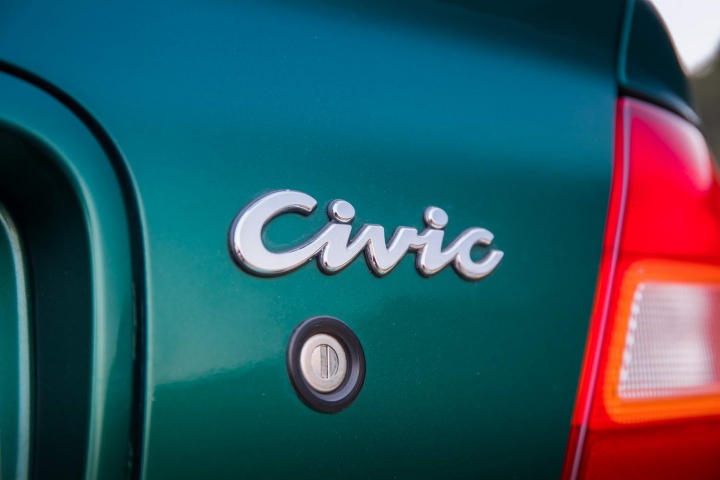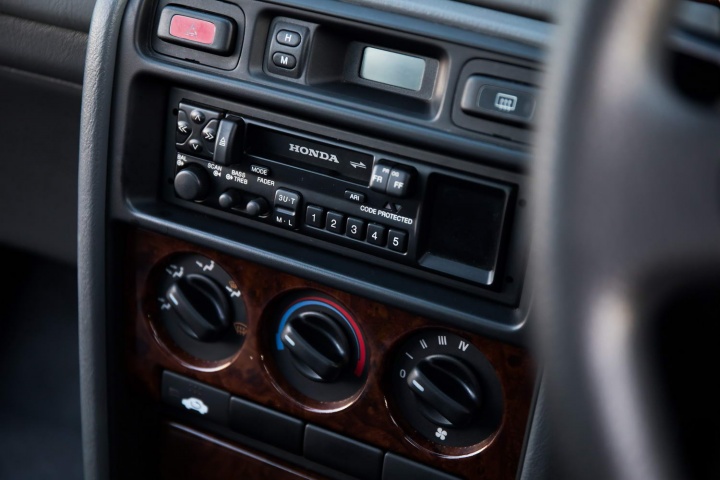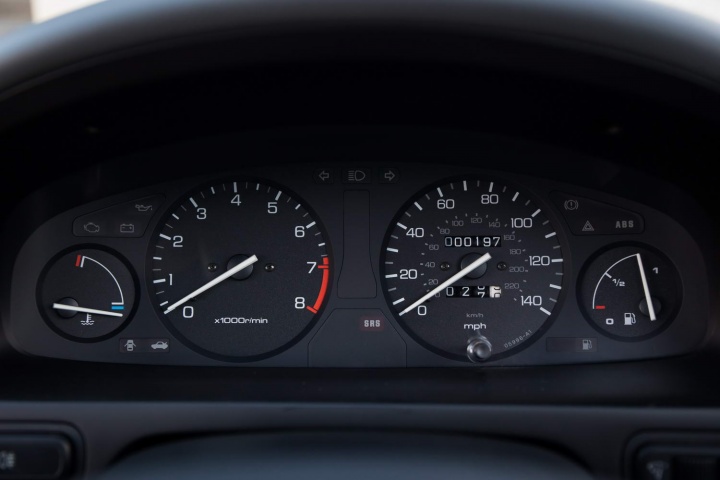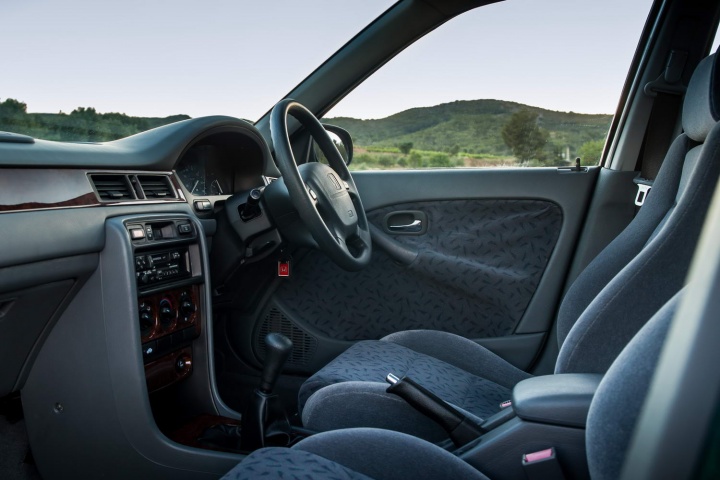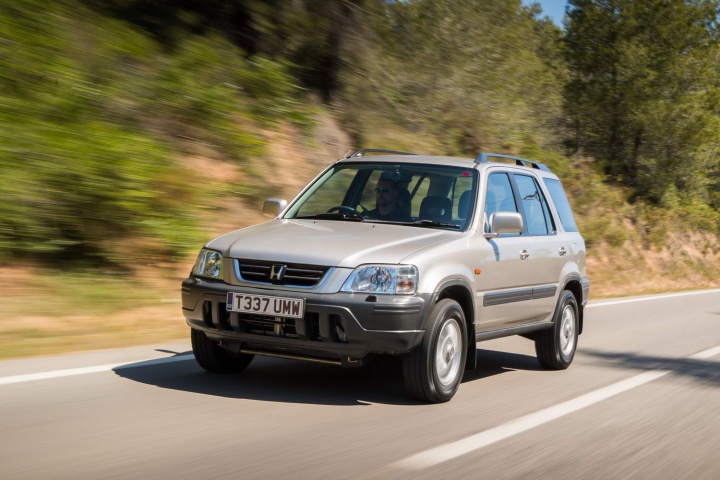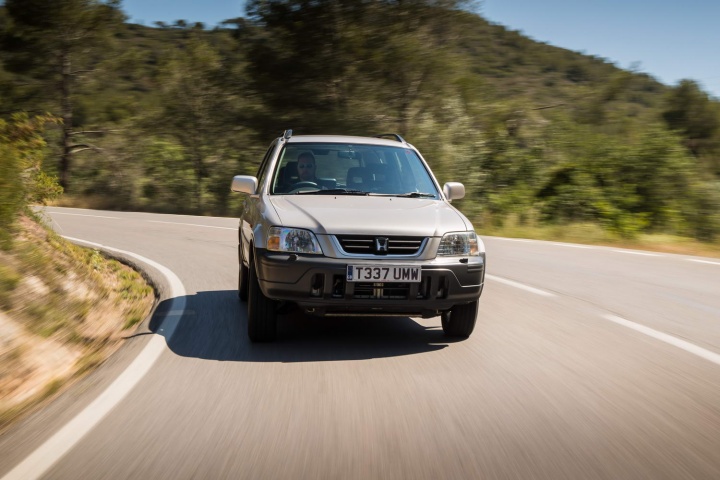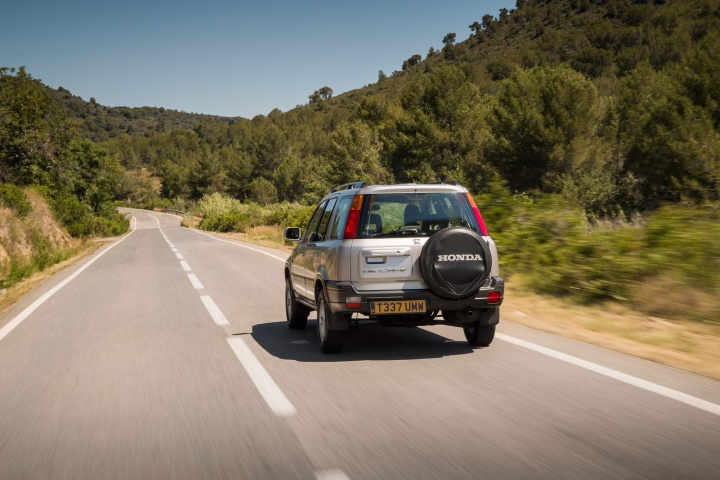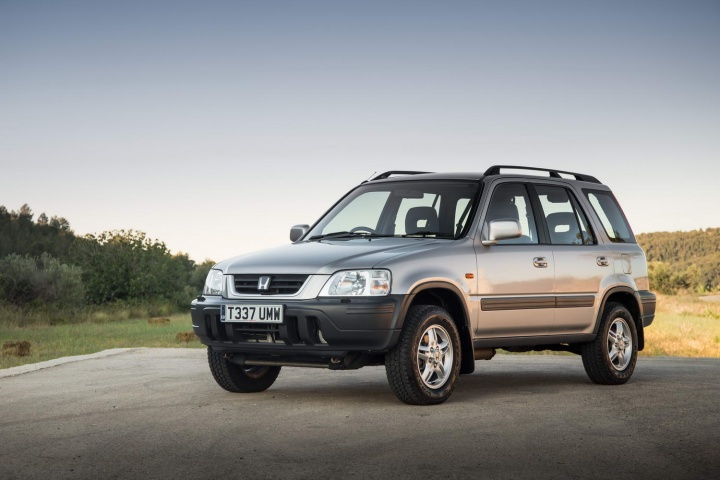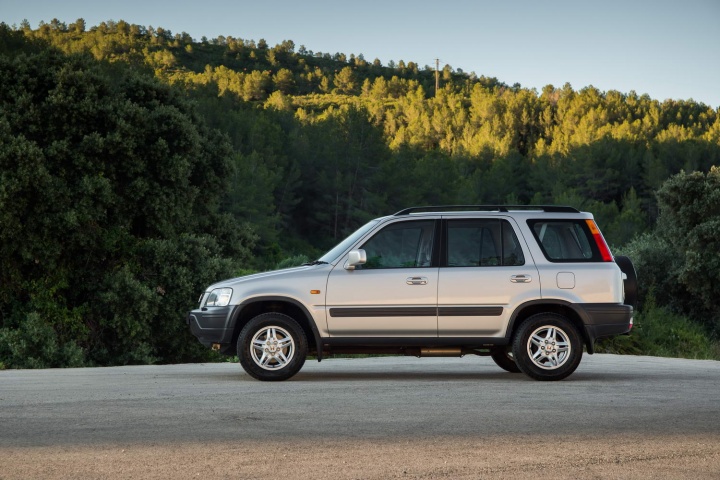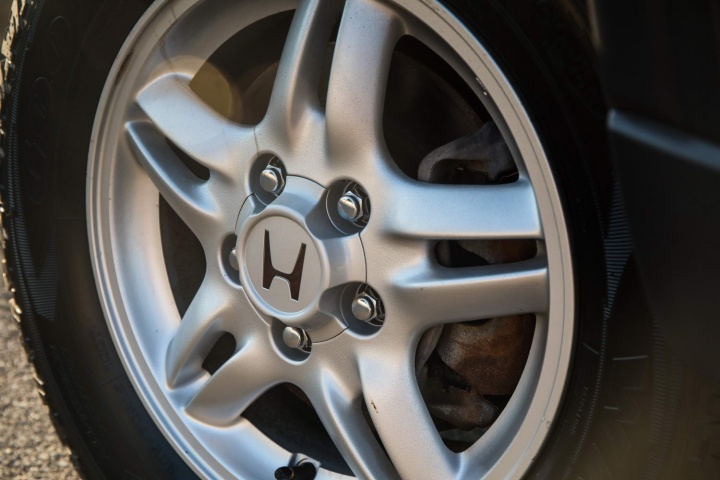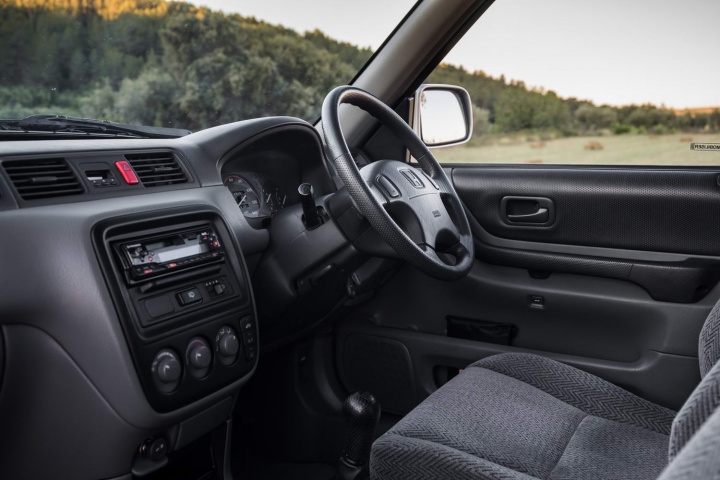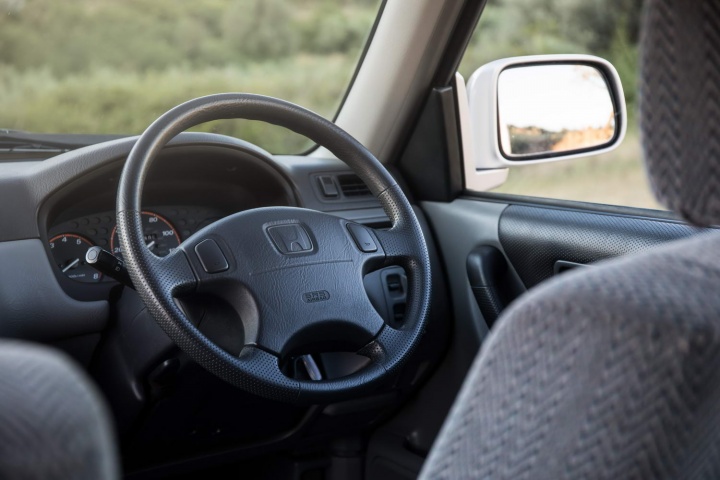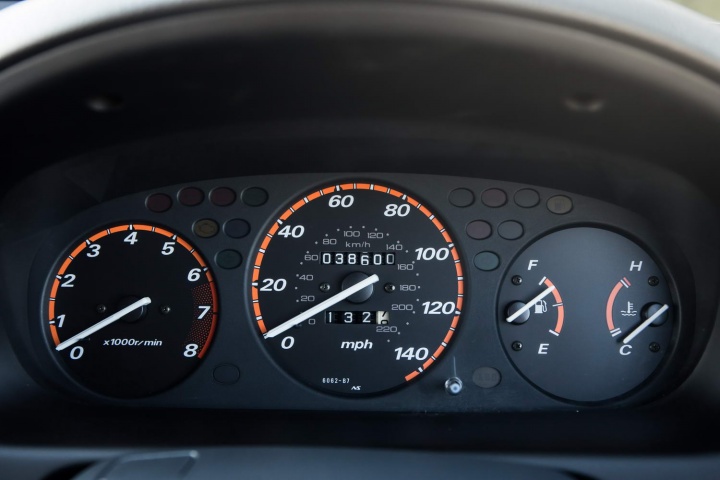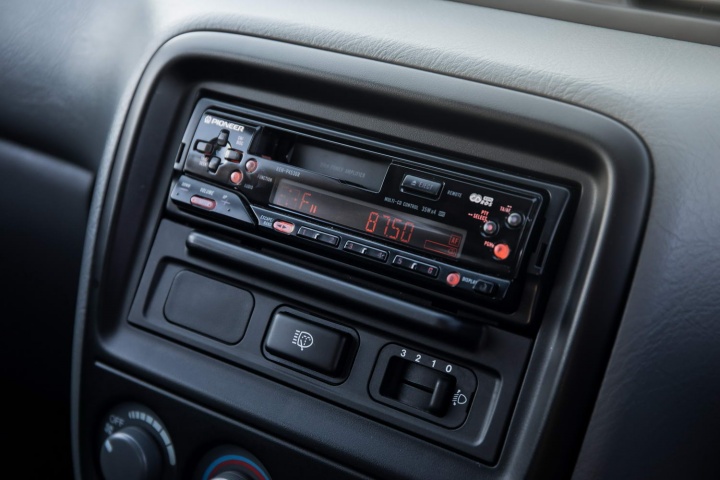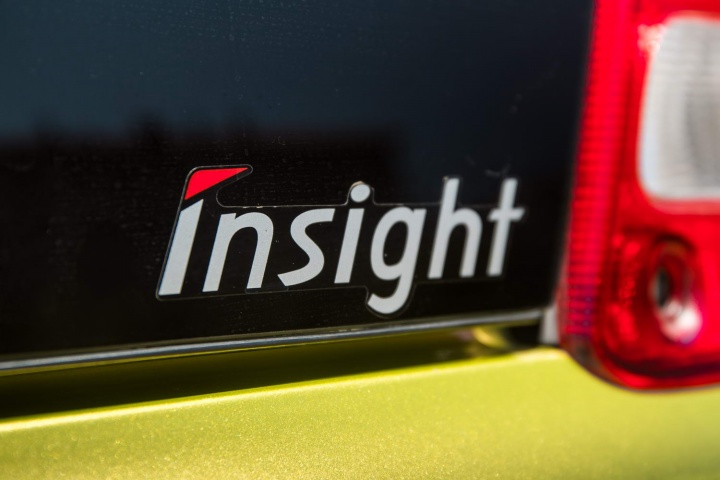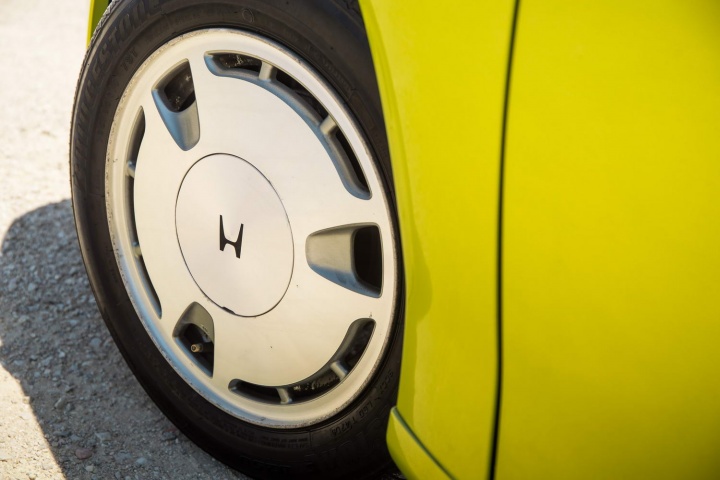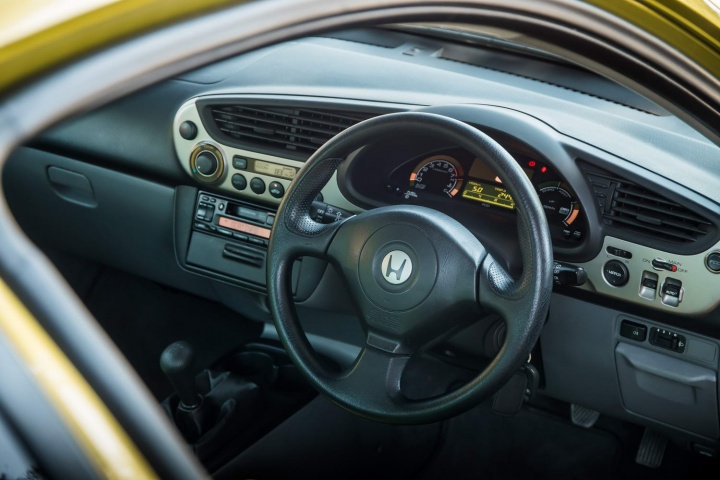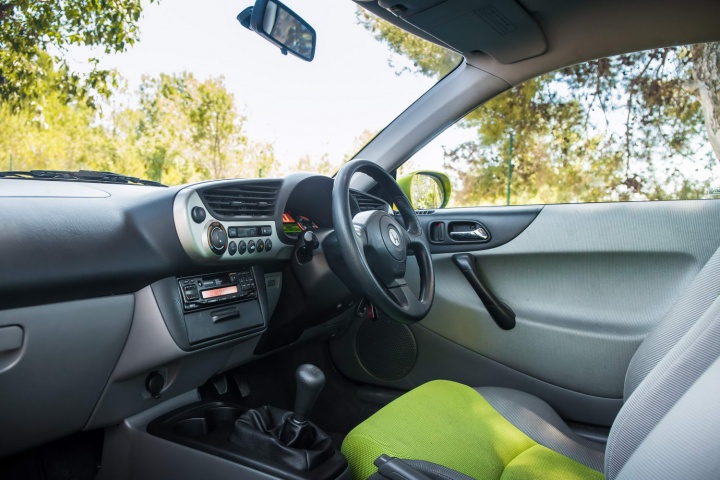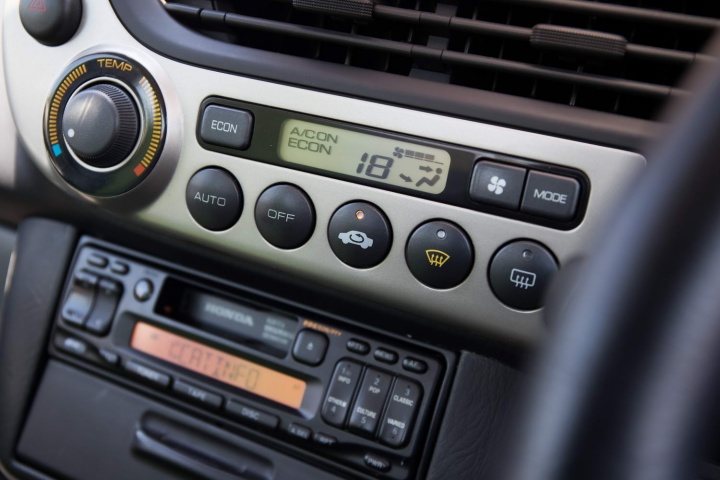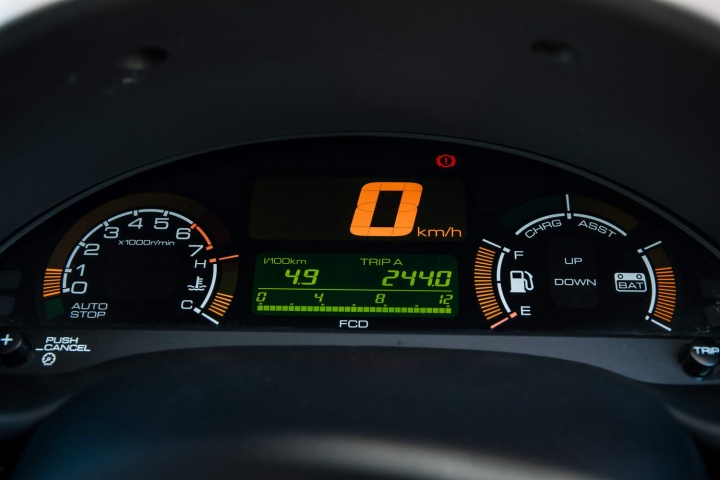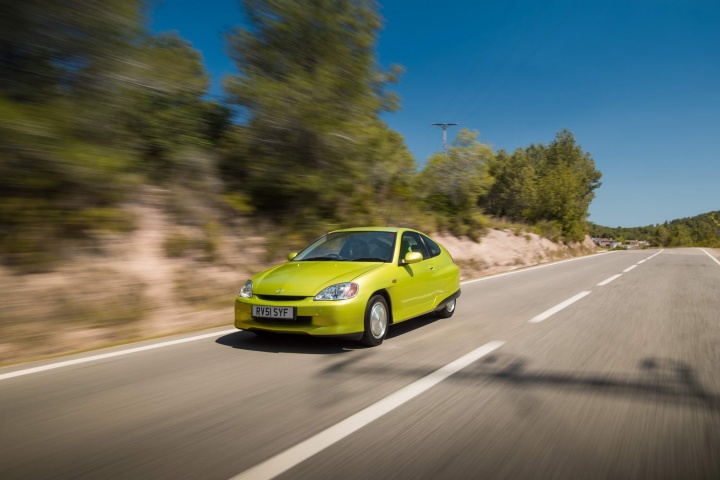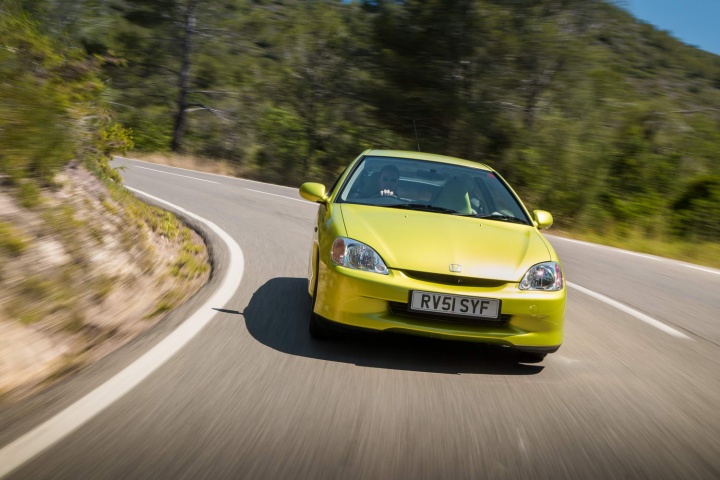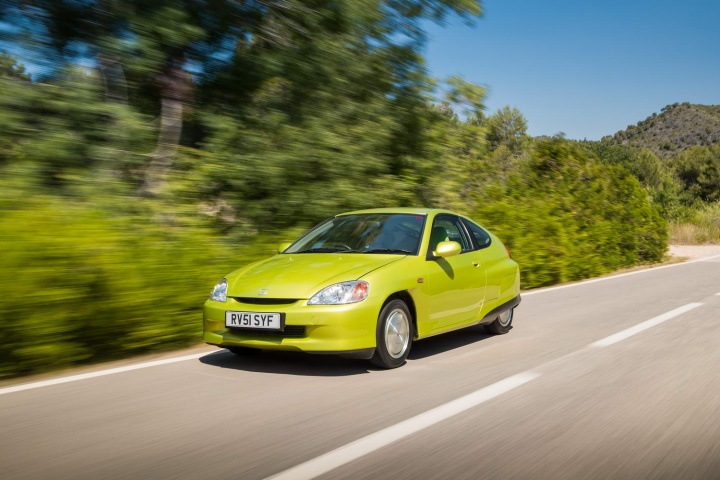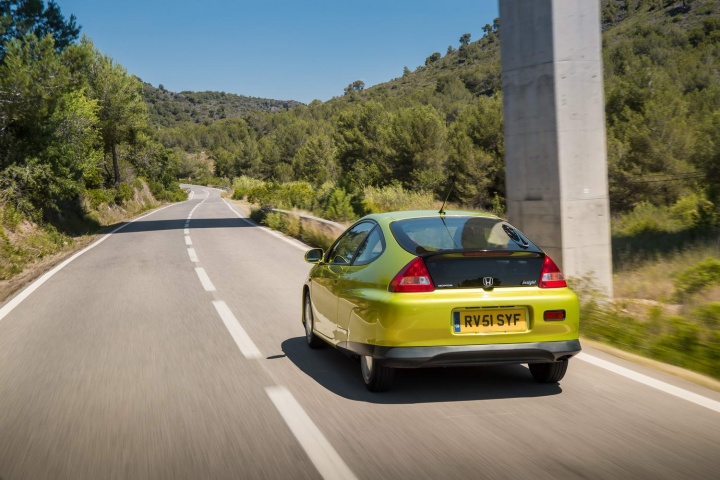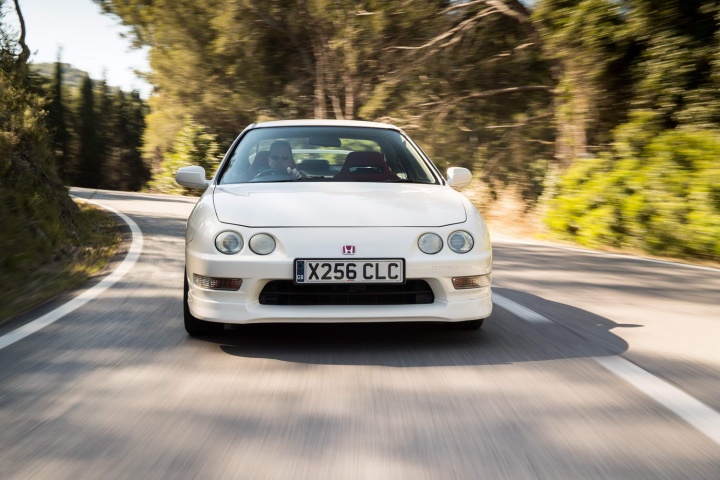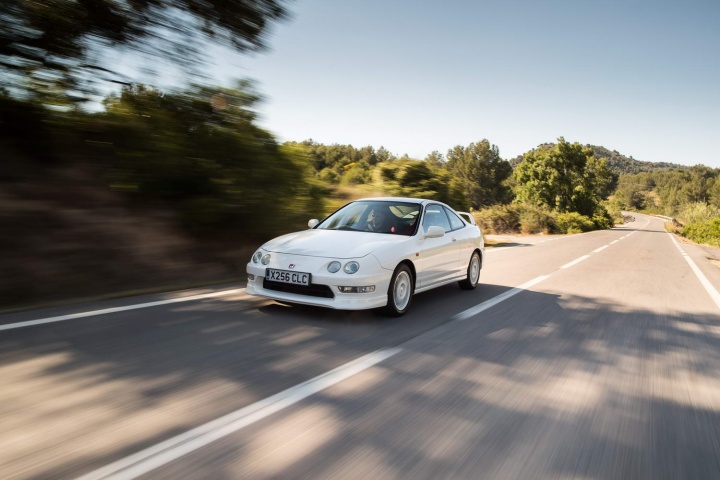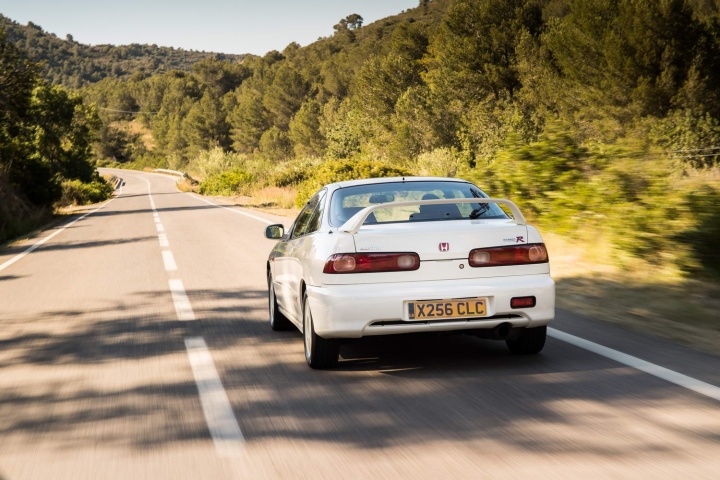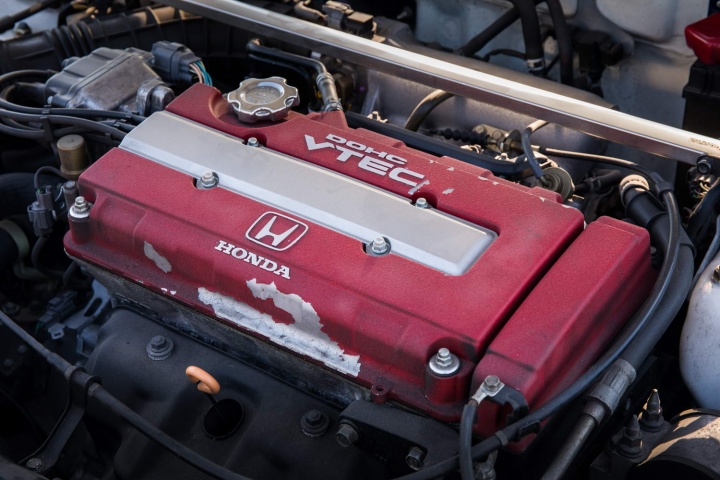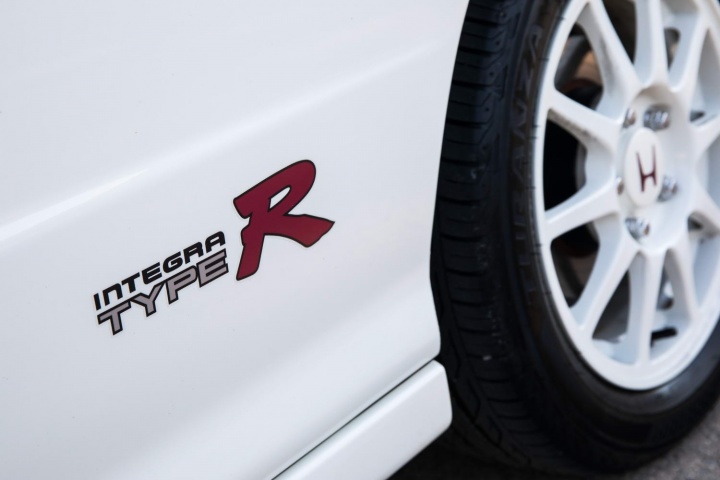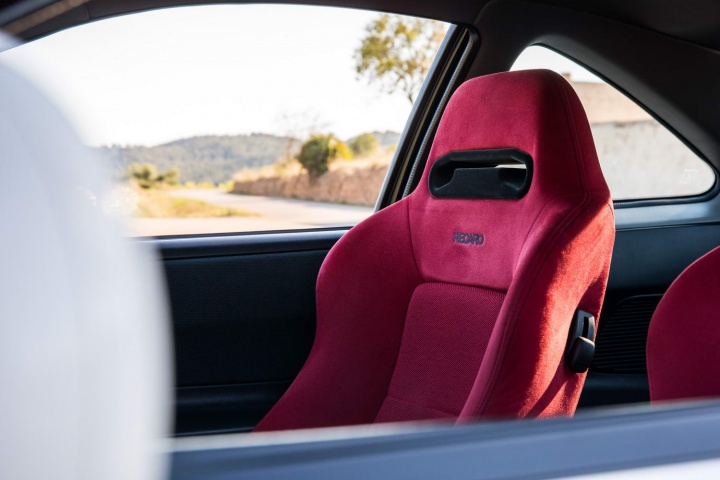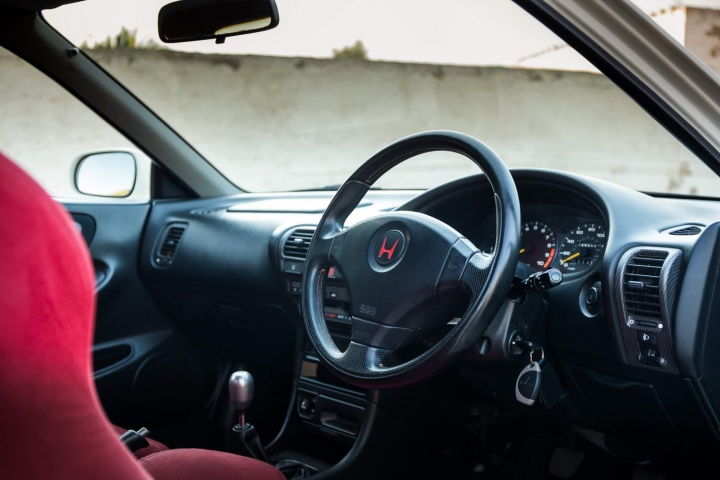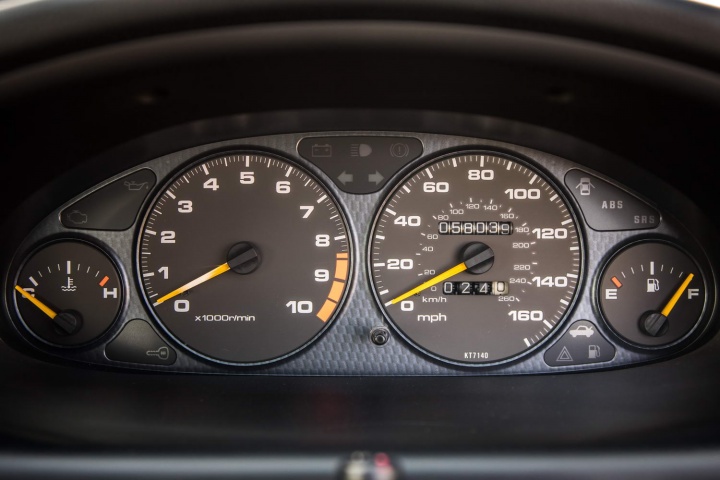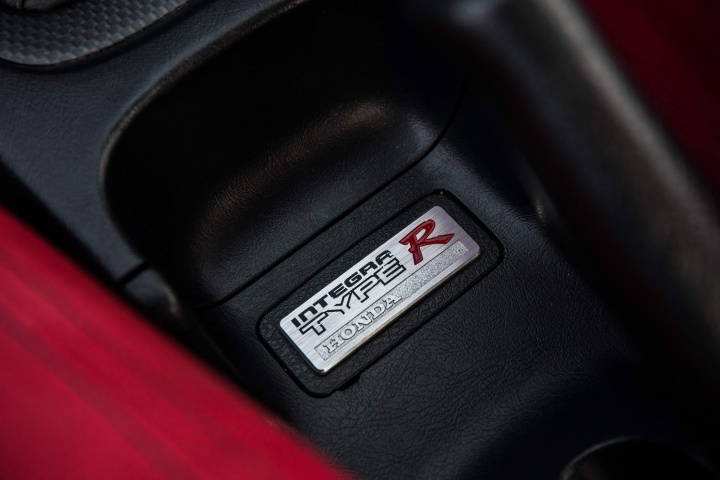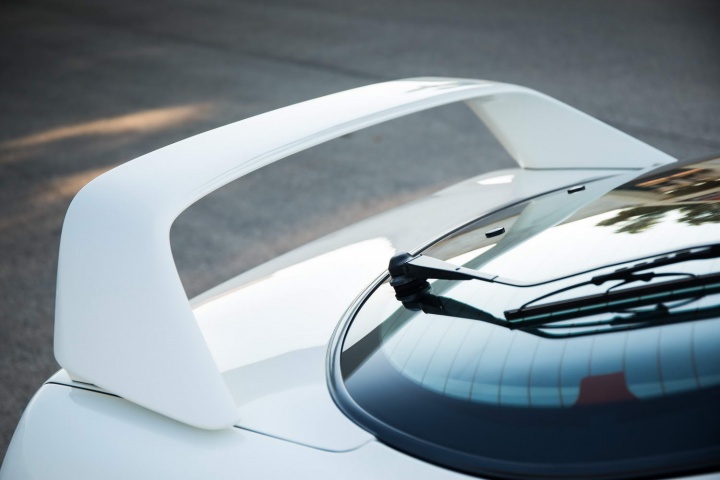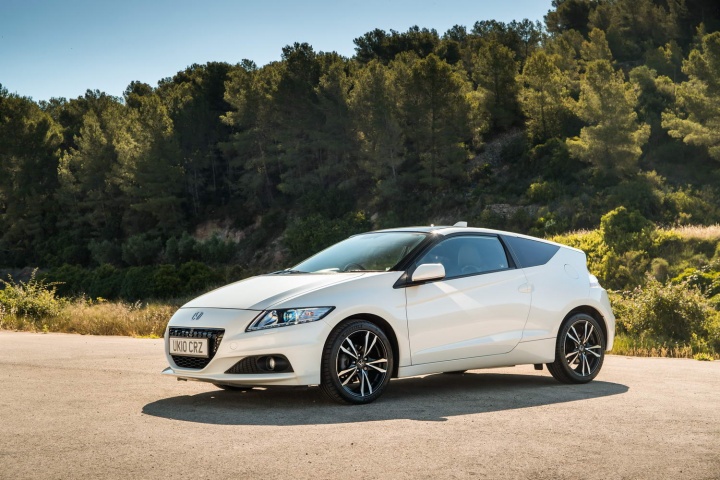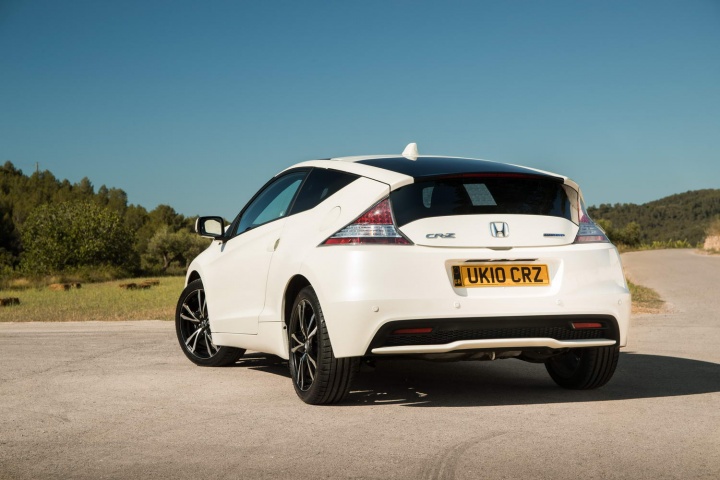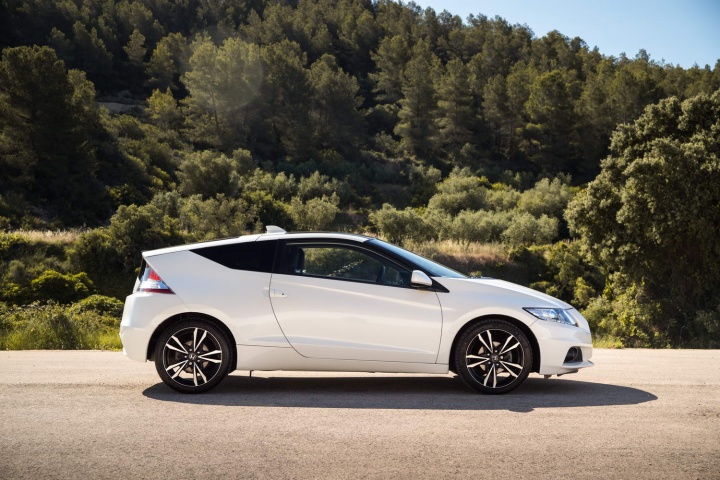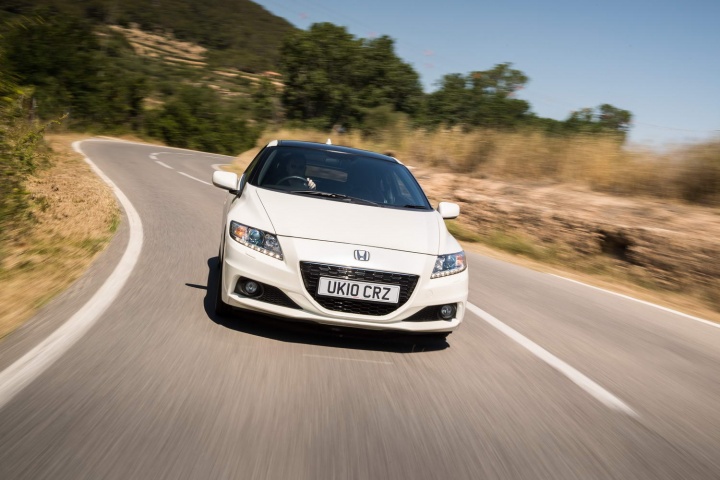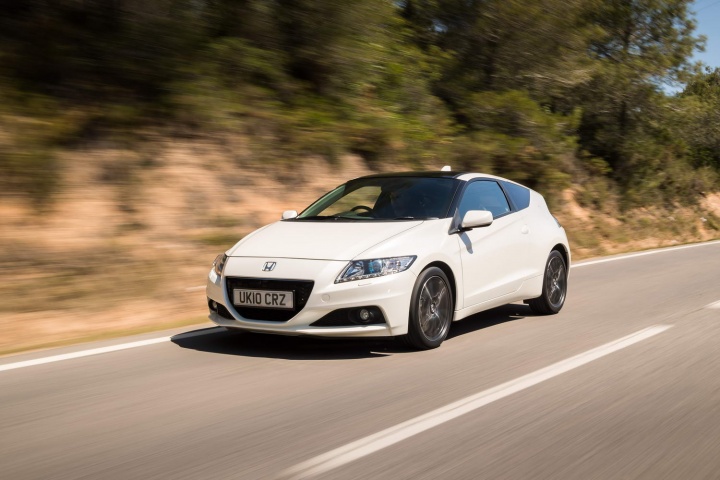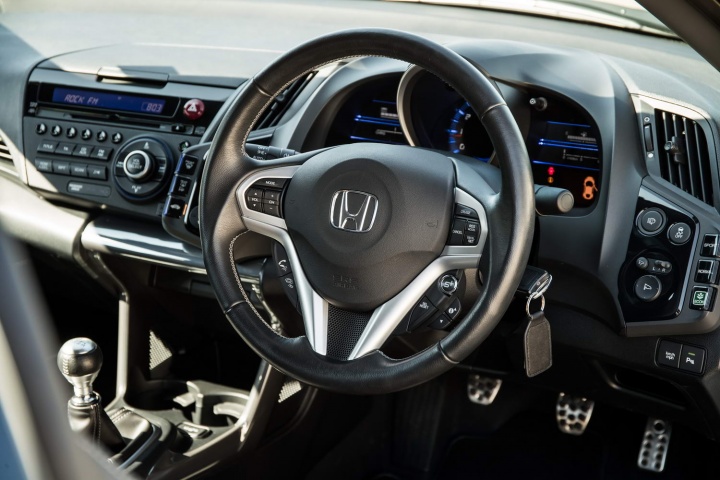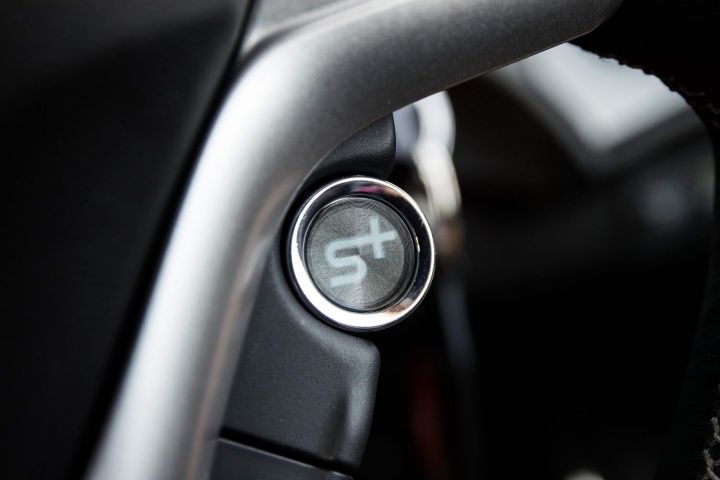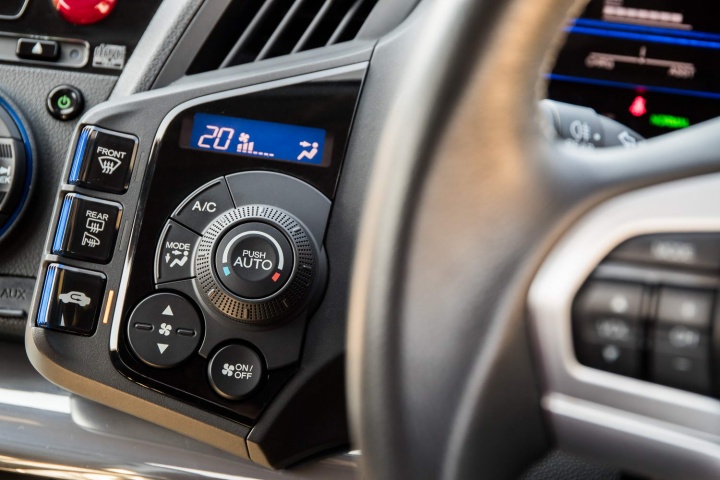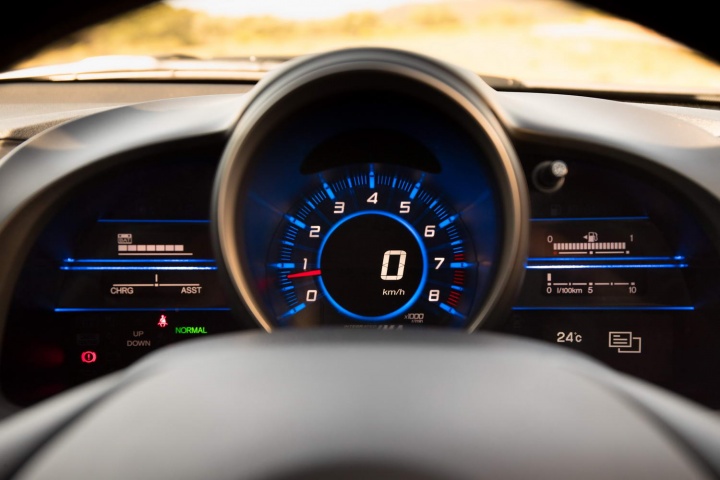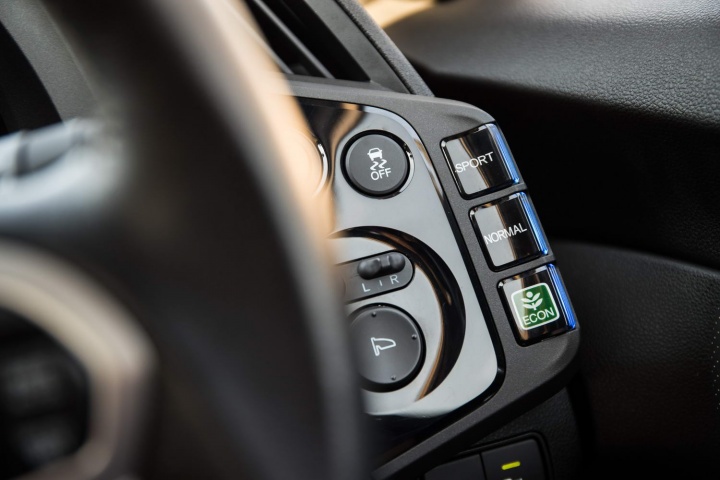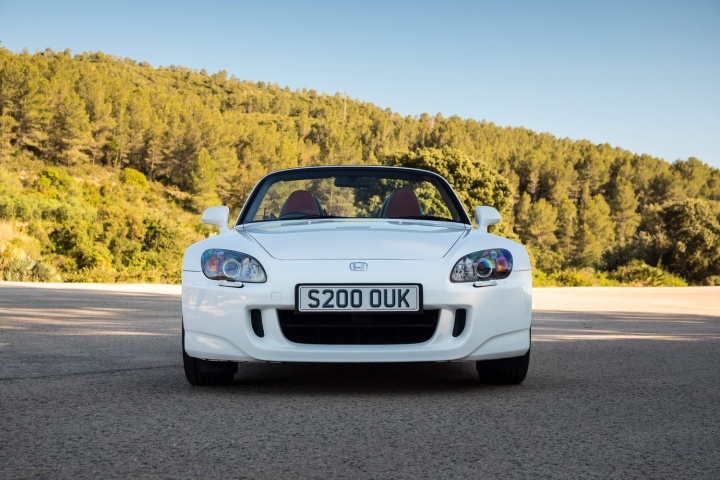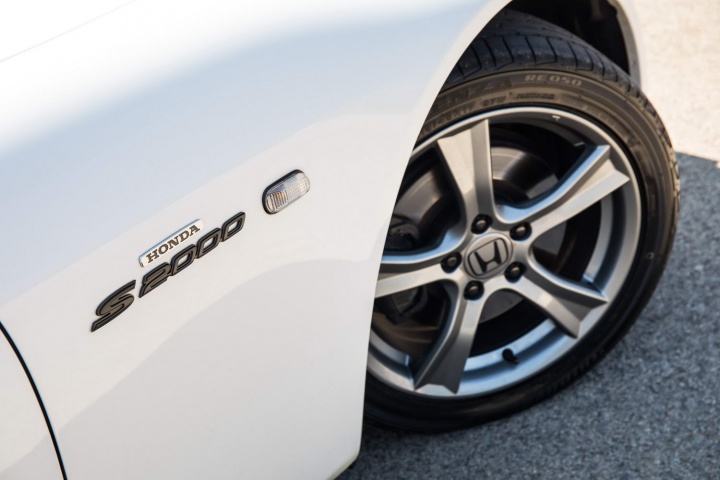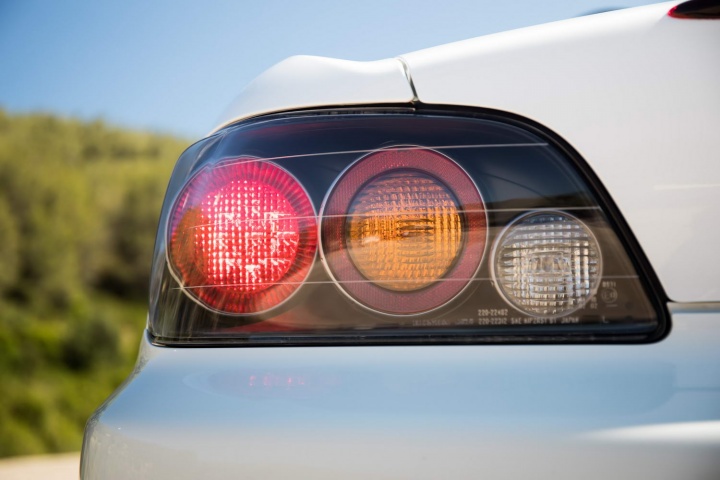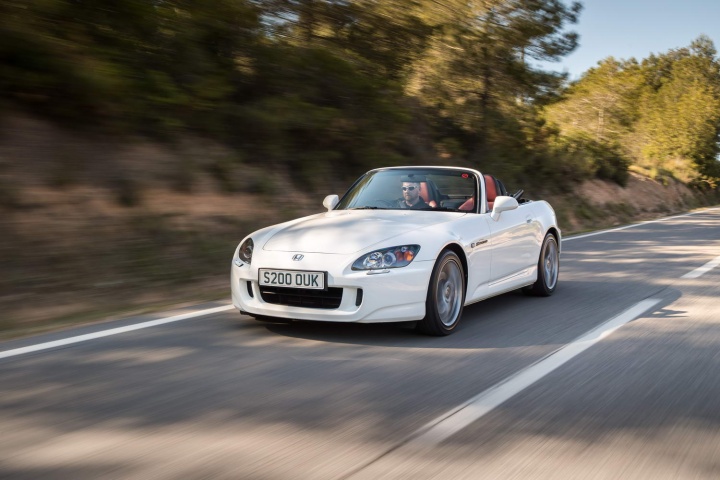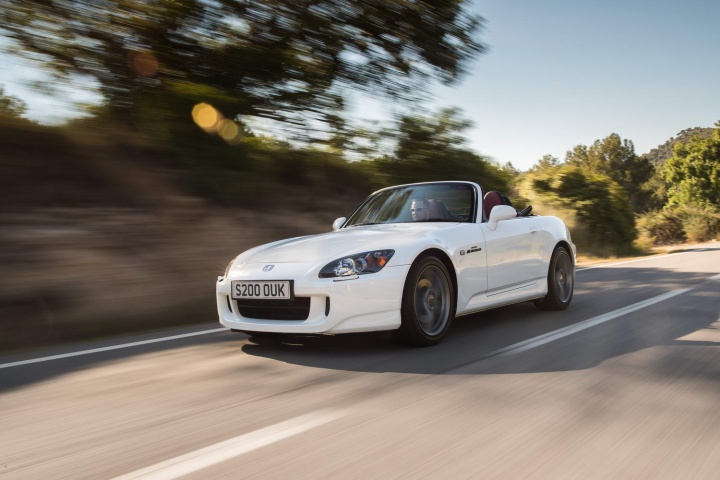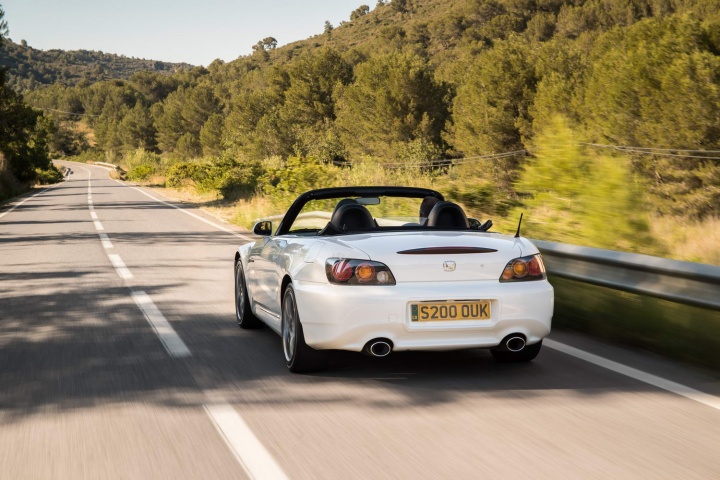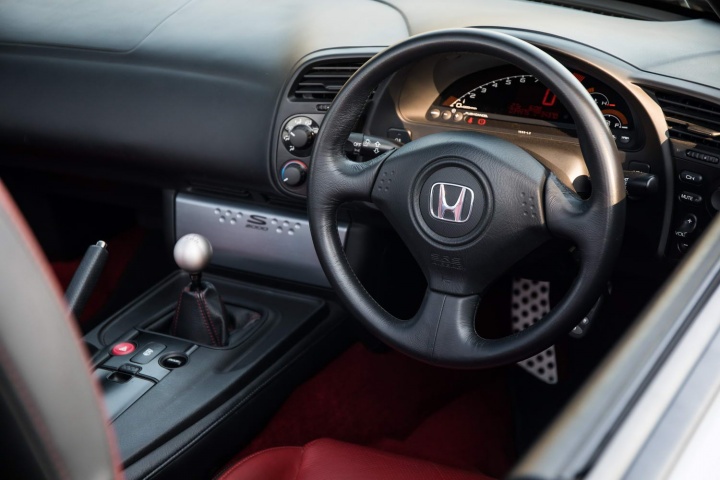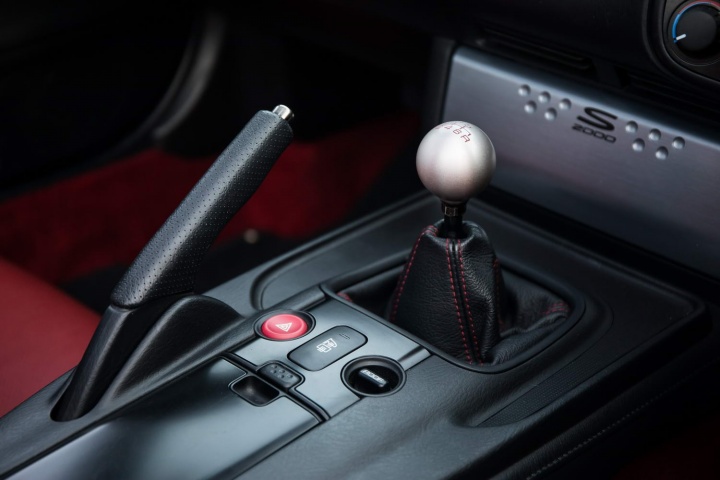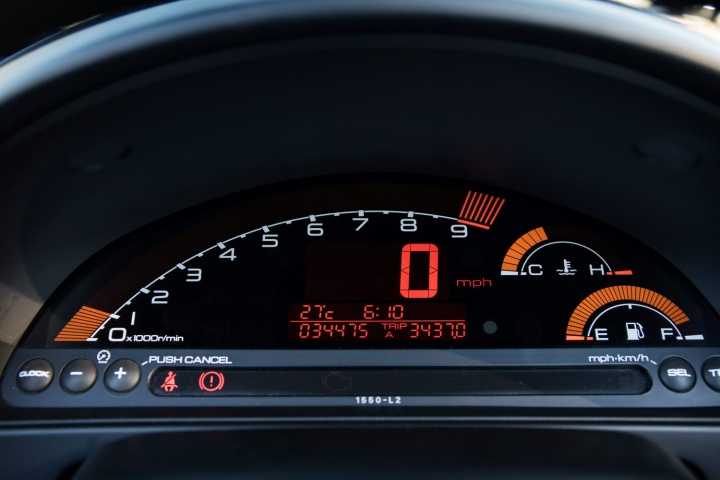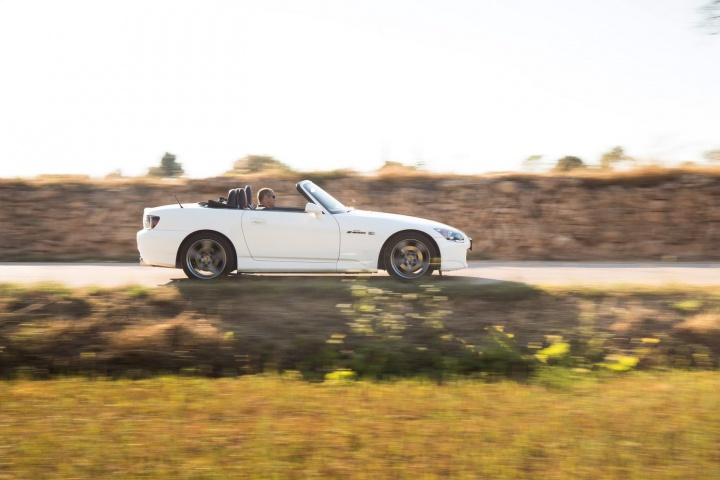There can't be many automotive manufacturers with a back catalogue of products as varied, technically intriguing and downright exciting as this collection of cars. The array of greatness laid out before us is a selection of some of the machines that reside within the heritage fleet belonging to Honda UK, and the team tasked with looking after these noble veterans was good enough to let us have some time behind the wheels of their cherished possessions. So here's how our day rifling through Honda's history books went...
THE CIVICS: 1, 6 and 10
Starting with Honda's long-serving hatchback, the company brought along the beginning, middle and end of the current story arc for this once-supermini-sized legend. Truth be told, as much as we like the current tenth-generation Civic, with time on the day tight and the older cars in great demand, we didn't feel the need to drive the Mk10 - we know enough about the excellent Honda C-segment challenger already, having tested it from 1.0-litre entry-point to turbocharged nutter Type R flagship and everything in between.
Which leaves the other two Civics to feast upon, and then attempt to digest how each of them led us to a world where the ultimate Civic now has 320hp and the ability to hit 270km/h. Sizing them both up, it's extraordinarily hard to tear your eyes away from the 1975 1.2 Deluxe (50hp, 0-100km/h 15.1 seconds, top speed 145km/h) - and not just because it is bright yellow, while its 1995 successor is a dark shade of green. When you park the Mk1 Civic alongside the latest model that you can buy in showrooms today, the difference is size is quite breath-taking. Of course, back in the day, the original Honda Civic - a rival to cars of the size of the Ford Fiesta and Mini Metro, both of which it predated, rather than the Ford Focus-sized machine of 2018 - didn't set the world on fire, but the minute a car becomes a true 'classic' of a certain vintage, it automatically assumes a veneer of desirability and coolness it never had before.
The same is true of the car registered 'MLA 993P', a hatchback that has already had a brief taste of fame as it starred as the original brochure car for the UK market way back when it was brand-spanking new. There's just a simplistic beauty about its curved roofline and rear end, a beguiling innocence about its basic but surprisingly spacious interior, a majestic beauty to the way the thin-rimmed steering wheel sits in the palm of your hands. Fire up the little 1.2 and it catches easily and first time, a reminder of why Honda (and other Japanese brands) became popular over here in those early days - European run-arounds of the same era were notoriously temperamental and fragile.
Honda only let us drive the Civic to and back from a local Spanish town, about 6km away, for the event, because everyone who also attended the driving experience understandably wanted a go in it and it wouldn't have been prudent to thrash the poor old dear up a mountain road time and time again. The fan had also been electrically bridged, to ensure the Civic stayed cool in the searing Iberian heat. And yet you wonder whether the support team weren't guilty of over-protective nannying. The 43-year-old Honda felt utterly comfortable in such conditions, with precise, beautifully weighted controls, a fine little motor that was more than capable of dealing with the Civic's sub-700kg bodyshell and an easy-going ride quality on its diddy 12-inch steel wheels. The gearbox and brakes also both worked better than you'd expect of such an old car, although the brakes required a decent slug of pedal pressure to get any retardation going.
It might be the case that the green 1995 Civic 1.6i LS (133hp, 0-100km/h 10.9 seconds, top speed 192km/h) would have been forgettable in and amongst this wider Honda crowd, as well as sandwiched between its glorious ancestor and talented Mk10 successor, but actually this 23-year-old machine has interesting history of its own. It was about this period that the Civic enlarged in size, to stop challenging superminis and instead become a family hatchback, and this car was of course the basis for the mid-1990s Rover 400 series (the earlier Rover 200 shared parts and bodywork with the Honda Concerto). This particular green example is even more special, as it's one of the first Civics to be built at plant Swindon in the UK and a vehicle with just 320km on its odometer at the start of proceedings.
We're not about to say it turned out to be an overlooked Japanese hot hatch in disguise or anything, but to drive this Civic was a most pleasant experience. There's a lightness of touch to all its major controls that speaks of superb engineering throughout the chassis, while visibility was exceptional and the ride comfort off-the-charts good. Never a critically highly-feted family hatch when new, it's not hard to imagine living with this green Civic as a daily driver in the here and now - a testament to its enduring excellence.
THE HYBRIDS: Insight Mk1 and CR-Z
After its traditional affordable performance coupes of the 1980 and '90s, in the shape of the Prelude and CR-X, Honda decided to keep the coupe thing going into the 21st century but with a modern take on the motive power under the bonnet. First up was the radical first-generation 2001 Insight (76hp, 0-100km/h 12.5 seconds, top speed 180km/h). It used a lot of forward-thinking engineering techniques to deliver astonishing eco-stats of 83.1mpg (3.4 litres/100km) and just 80g/km of CO2, primarily by using an aerodynamically slippery shape with a drag coefficient of 0.25 (including faired-in rear wheels) that was made of weight-saving aluminium. A 1.0-litre, three-cylinder VTEC engine delivering 68hp and 90Nm was bolstered by a nickel-metal hydride battery and an ultra-thin DC brushless motor going under the name Integrated Motor Assist (IMA), resulting in peak outputs of 76hp and 113Nm.
Therefore, fast, the Insight is not. As a rare manual-gearbox hybrid, you can leave the Honda in second and pin the throttle, and you won't exactly go anywhere very quickly - especially if the land you're motoring along starts to rise. What you can do, though, thanks to its light weight, magnificently calibrated controls and its surprisingly adept body control, is maintain as much of your hard-won straight-line speed through the corners as is humanly possible. The Insight is a real hoot to drive, all delicate and nimble, and its retro-futuristic cabin - complete with lime green accents, seats and hybrid power management displays - only adds to the car's undoubted charm.
The CR-Z (122hp, 0-100km/h 9.9 seconds, top speed 200km/h), launched nine years after the original insight, takes up the IMA baton and runs with it - while also adding in a clear styling reference to the aforementioned CR-X with its wedge shape and Kamm tail. Here, the emphasis was more on sporty driving than fuel saving, but the CR-Z was still no road rocket, with its power figure and 174Nm of torque only just scraping the Honda under the ten-second barrier for the 0-100km/h sprint. However, it retained the manual gearbox (albeit with one extra gear compared to the five-speed Insight) and had an even more cutting-edge cabin, complete with blue dials and displays. Furthermore, the CR-Z manages to cram two minuscule seats into the back of its cabin, making it a 2+2 (of sorts).
It's even better to drive than the Insight, though. With sharp handling and great steering, the CR-Z felt a lot more potent than its 122hp might suggest. It also felt like it is still on the cusp of the latest technical know-how, rather than being something from a bygone era of manufacturing. And it looks cool, too; if only the 197hp Mugen version of the CR-Z had taken off, we might have had an intriguing seedling for a continuing hybrid Type R line...
THE BORING ONE? CR-V Mk1
Look, we see enough examples of the original-generation CR-V (128hp, 0-100km/h 10.5 seconds, top speed 174km/h) still tooling around today to know how unbreakable and admired they are, in equal measure, but in this car park? With mid-engined supercars and 1970s survivors and screaming roadsters and fancy proto-hybrids knocking around? Be honest, would YOU have made a beeline for a champagne-coloured CR-V with herringbone-velour seats?
Our snobbery was ill-judged, though, because this 1999 CR-V was much like the 1995 Civic. It had the same breezy set of major controls that make driving it a complete cinch, and once we did get it out on open roads and started driving it in an inappropriate fashion, it held itself together very well and proved more rewarding to steer than many of the current batch of B- and C-segment crossovers are today.
And that's the CR-V's genius, of course. While Nissan will claim it invented the crossover in 2006 with the Qashqai, Honda was making the CR-V - an affordable off-roader that used hatchback drivetrains - way back in 1997. Naturally, Toyota might bring up the RAV4 of 1994, but we'd argue that the CR-V is the nicer machine out of those two... oh, and it has a fold-out picnic table in its boot. What more could you from a car than that?
THE RACY ONES: Integra Type R DC2, S2000 and NSX
Honda's engineering brilliance can be applied to a wide variety of car types, as we've already seen, but it's never more alluringly employed than when the company decides to make a fast car. And these are three of the finest examples of the breed. The 2001 DC2 Integra Type R (190hp, 0-100km/h 6.7 seconds, top speed 233km/h) almost needs no introduction. It has been hailed by many as the greatest front-wheel-drive performance car ever built and prices of good, clean used ones are already on the rise at a quite alarming rate. This Championship White example is as pure an ITR as you could wish to find - and the driving experience is mesmeric. Everything about it is first rate, from the sharp, informative and accurate steering, to its powerful and progressive brakes, its machined-to-perfection manual gearbox and, of course, that fizzing 1.8-litre VTEC banshee engine up front.
It even has better ride quality and noise suppression than we remember from our (much) earlier drives in it, but hook all of these together on the right road and the driving experience of this be-spoilered Honda is dream-like. It moves about so fluidly and clearly underneath you that you can place it to within the millimetre of where you want it to be on the road, and all the time it is relaying so much information back to you that you're grinning maniacally from ear to ear. The noise of that four-cylinder engine closing in on its redline is addictive, the ITR engages its driver at all road speeds, including those that aren't way beyond the legal limit and, ultimately, it proves to be the star of the day. Kind of obvious, really, but immensely gratifying all the same.
The 2009 Honda S2000 Edition 100 (240hp, 0-100km/h 6.2 seconds, top speed 241km/h) is a car dominated by its engine, but in a good way. Honda's 50th birthday present to itself in 1999, the S2000 two-seat roadster continued in production for a decade and was only ever really mildly tweaked and updated on a number of occasions during that time. Certainly, its ballistic four-cylinder VTEC engine stayed the same (in this country, at least) from the commencement of production to the last example rolling off the line in 2009.
It's a gem of a unit, too. It doesn't kick until 6,000rpm, but then you hold it out to 8,300rpm in a frenzy of noise and acceleration, bang in another gear in what must be THE best manual gearbox ever made (it's even better than the Integra's shift action, which really is saying something) and the S2000 hits hard again. Hood down to hear the most of that four-cylinder frenzy, it's intoxicating and, as convertibles go, it has a good, firm chassis thanks to X-bracing in the structure. It's not flawless, as it can feel like hard work at times, but the S2000 must be one of the most vibrant two-seat soft-tops that has ever reached production.
And then there's the daddy, a 1990 NSX 3.0 Coupe Automatic (256hp, 0-100km/h 7.5 seconds, top speed 260km/h). Actually, if we're being frank, this self-shifting early NSX isn't the finest example of the breed - that torque converter gearbox, later branded F-Matic, means the V6 engine had to be detuned to 256hp and the performance was actually less impressive than a 1991 Prelude Si VTEC (0-100km/h in 7.1 seconds), but there's still something special about driving the pioneering Japanese supercar. You sit high in the cabin, but low to the road, looking out over that tarmac-scraping snout - that houses those to-die-for pop-up lights, a fact you're wonderfully reminded of when you flash to let traffic out of a side road... and then you giggle childishly as the lights emerge from the wings. The steering is still marvellous and the handling a delight, while the 3.0-litre V6 sounds immense as it hits VTEC and then revs out.
Oh, and Ayrton Senna once drove this very car, albeit very briefly. His nephew Bruno, himself once an F1 driver, has signed the underside of the engine-bay lid. And it's the oldest right-hand-drive NSX in this particular part of the world, being the second sold in the UK (the first has already gone to the great sports car graveyard in the sky). How about that for true automotive kudos of the highest echelon?
THE POP-UPS ONE: Prelude Mk2
From one pop-up headlamp-equipped Honda to another, which might look sporty but isn't. But don't let that put you off. This third-gen 1989 Prelude EX (114hp, 0-100km/h 9.8 seconds, top speed 188km/h) is a twin-carb 2.0-litre model, rather than one of the snazzier fuel-injected 150hp variants that also came with the Prelude's party piece of four-wheel steering. However, this coupe pulled the same trick as the Civic and CR-V, worming its way into our affections by simply driving in the sweetest way imaginable.
It's light and airy on board, while the rear seats look like they might be able to accommodate some actual human beings. The controls are well-sited and the major driver interfaces are again about spot on. The five-speed manual gearbox snicks smartly through the gate, while the engine has an appealingly fuzzy growl to it at low revs and just enough performance further up the tacho to make the Prelude feel acceptably brisk.
Yet it's the ride quality that sticks longest in our minds, because - for all its arrow-shaped front end with its fantastic headlights and its two-door side-profile and its promise of a 9.8-second 0-100km/h sprint when fully lit - it was the way the 13-inch-alloy-shod Prelude glided serenely across even the very worst surfaces that made our hearts melt. This was clearly one of those rare occurrences back in the day: a smooth, amenable and taut daily driver that just so happened to be dressed up in a sharp suit. How can you not love something as brilliant as that?
THE ONE THAT GOT AWAY: Accord
If you've noticed the grey Honda Accord Mk5 in the pictures and wondered why we didn't drive it; it wasn't for want of trying. This car is even more special than the 1995 Civic, because it is the first-ever vehicle built at the Honda Swindon plant in the UK. It is similarly 'delivery mileage' to the Civic but it had been stored for two decades without moving, before being recommissioned for this event, and whoever parked it up back in the 1990s left it full of fuel. So, a slight 'dirt in the fuel lines' issue dropped it out of action in Barcelona - but it will be rectified once the car is back in Honda's workshops, so maybe one day soon we can give it a whirl. Probably wearing 1990s rep attire, like a cheap cotton shirt and gaudy tie, or something...
THE CONCLUSION
You can probably tell, but we adored every car that Honda laid on for us. Some were slow. Some were saddled with mediocre gearboxes, or stodgy steering. Some had plain, plasticky interiors that were probably sub-optimal even when they were in their prime. And yet all of them were connected by this company's unarguable, coruscating engineering genius. When Honda puts its mind to something, it almost invariably gets it right and delivers a stunning product that will stand the test of time - be that a hybrid, a roadster, an SUV, a family hatchback, a city run-around, a supercar or a performance coupe. In fact, what this drive of nine of Honda's greatest past glories conveys to us in high-definition widescreen vision is that the Japanese company might well be a jack of all trades, but it's a master of all of them, too.

